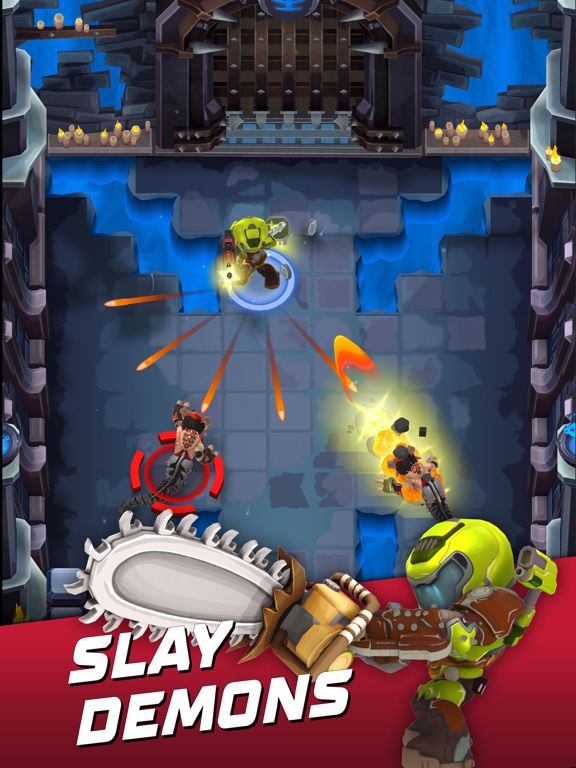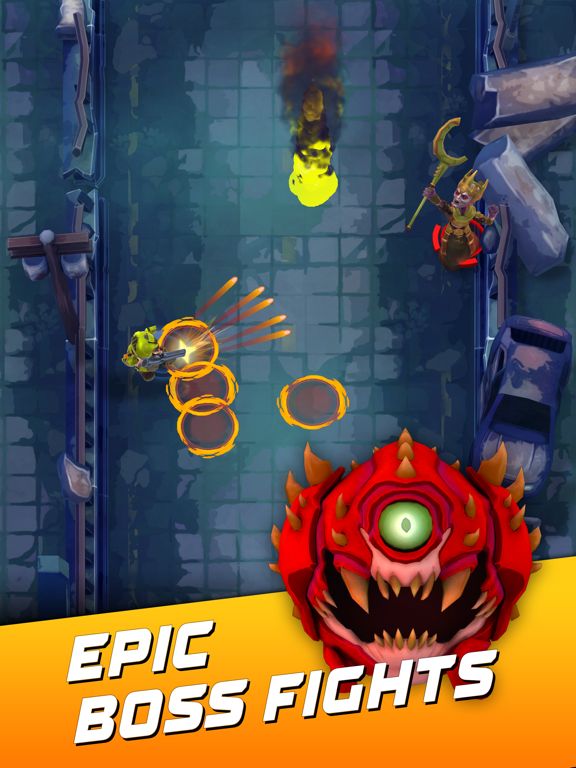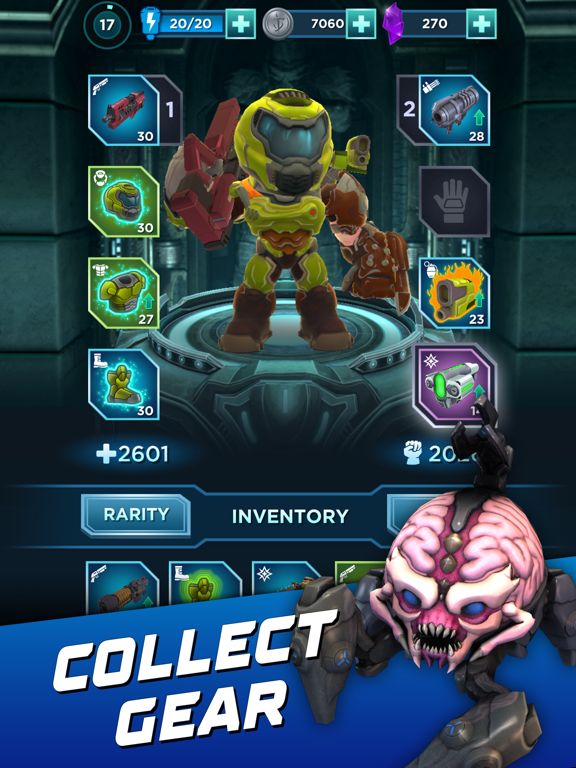


Doom has had many releases over the past 30 years, not just in rereleases, but in sequels and spinoffs.
Below is an exhaustive timeline of all official Doom products from the beginning to now.
Summaries are paraphrased or otherwise copied from their respective entries on the Doom Wiki


Doom (officially cased DOOM) is the first release of the Doom series, and one of the games that consolidated the first-person shooter genre. With a science fiction and horror style, it gives the players the role of marines who find themselves in the focal point of an invasion from Hell. The game introduced deathmatch and cooperative play in the explicit sense, and helped further the practice of allowing and encouraging fan-made modifications of commercial video games. It was first released on December 10, 1993, when a shareware copy was uploaded to an FTP server at the University of Wisconsin.
The first-episode shareware format of the initial release offered a substantial and freely playable taste of the game, which could be distributed with ease on floppy disks, over the Internet, and in CD-ROM packages, thus encouraging players and retailers to spread Doom as widely as possible. By 1995 the shareware version was estimated to have been installed on more than 10 million computers. The full or registered version of Doom, containing all three episodes, was only available by mail order; although most users did not purchase the registered version, over one million copies have been sold, and this popularity helped the sales of later games in the Doom series, which were not released as shareware. The original Doom did eventually receive a retail release as well, when it was offered in an expanded version as The Ultimate Doom (adding a fourth episode).
Doom is widely regarded as one of the most important titles in gaming history. In the wake of its immense popularity, dozens of new first-person shooter titles appeared, which were more often referred to as "Doom clones" than "first-person shooters". id Software went on to release a sequel, Doom II, followed by an expanded edition for retail stores (The Ultimate Doom), and additional levels by experienced WAD designers from the fan community (Master Levels for Doom II and the standalone Final Doom). Doom itself was eventually ported to several dozen other operating systems and consoles.


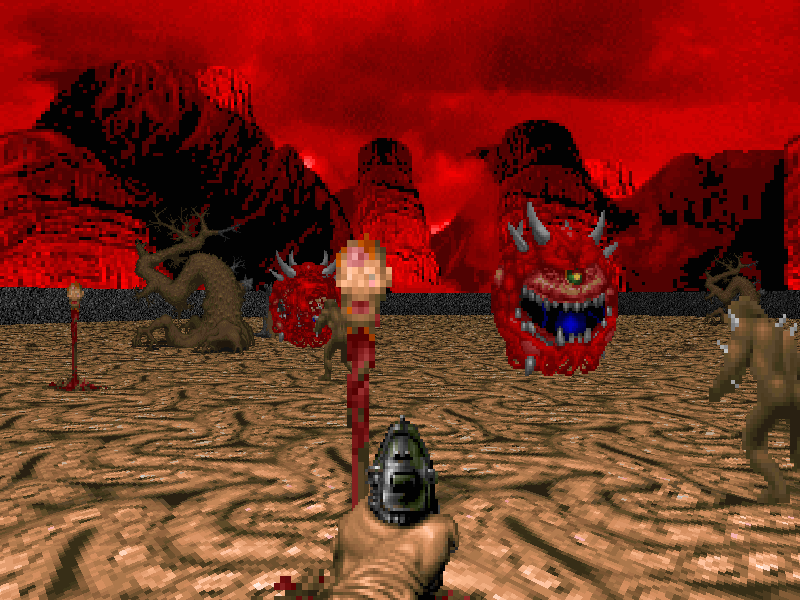

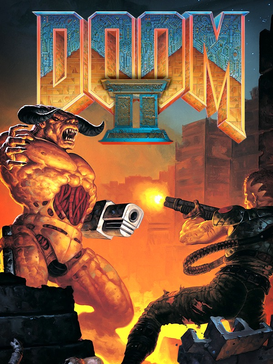
Doom II: Hell on Earth is the first sequel to Doom, released by id Software on September 30, 1994, followed by the official release party on October 10.[1] Featuring 32 levels in a single linear episode, Doom II continues Doom's story, seeing the player returning to Earth to single-handedly fight off an invasion of the planet by demons.
Doom II includes several gameplay enhancements over the original Doom. Most notable are the introduction of several new monster types, plus an additional weapon (the super shotgun). While the original game was distributed via shareware and mail order (to purchase the full game), Doom II was the first game developed by id Software to be sold commercially in stores, with cooperation of distributor GT Interactive. This represented a change in business model for id that would later be adopted more widely.
In terms of gameplay, Doom II is similar to the first game, adding only incremental changes to its formula in the form of new monsters and a new weapon. To progress, the player must still navigate non-linear levels, find keys, and unlock new areas while defending against an onslaught of demons. Technologically and graphically the game is identical, though due to more complicated levels and larger fights the base system requirements for the game were higher. Doom II sold over two million copies, the most sales of any id Software game at the time. The new and varied enemies, and its innovative non-linear level design were praised by critics.
Because it is, in a sense, "Doom but with more stuff," Doom II's .wad file is most often used as the IWAD for user-created level packs.
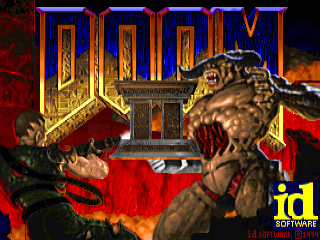
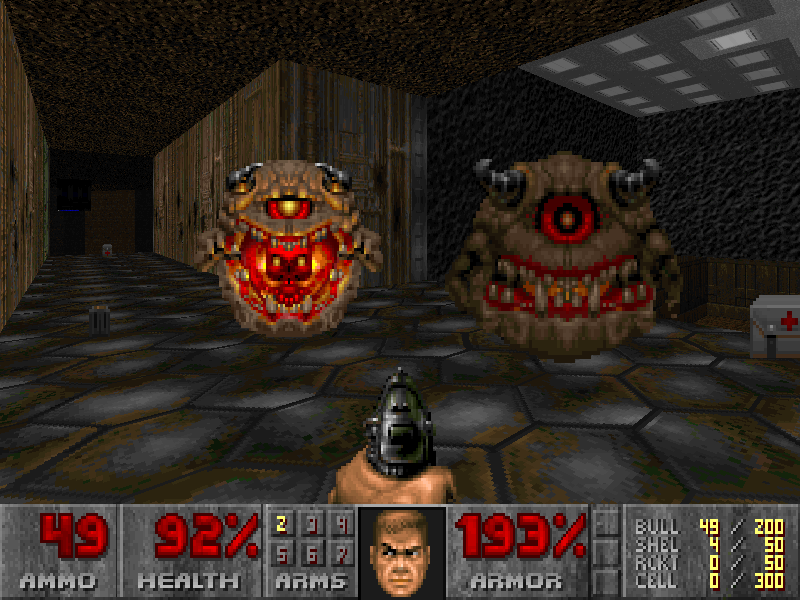

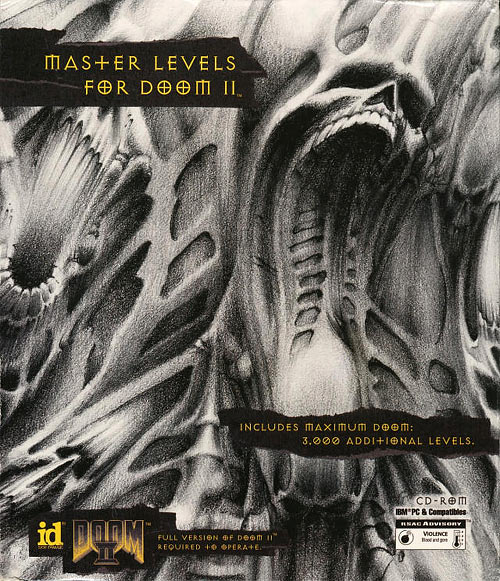
The Master Levels for Doom II were released on December 26, 1995 by id Software as an expansion pack for Doom II. It was also included as a bonus on the Doom 3: Resurrection of Evil Xbox game disc in 2005, and in Doom Classic Complete on PSN. The PlayStation version of Final Doom includes 13 levels from the Master Levels.
The CD contains twenty WAD files created by various authors under contract. The file TEETH.WAD contains a secret level, so there are a total of 21 levels. To ease playing these WADs, the collection also includes DOOM-IT, an application created by Chris Badger for id Software which allows the individual WADs to be loaded through a menu interface.
As a bonus, a poster and 1830 amateur PWAD files downloaded from the internet (collectively called Maximum Doom) were also included in the retail release. (The Maximum Doom levels are not included with the downloadable version found on Steam.) Also of note is that some of the contracted designers for the Master Levels had levels they had previously released on the Internet that were included in Maximum Doom. It has been mentioned by John Romero, John Carmack, and several of the involved mappers that the primary motivation for the creation of the Master Levels was to "give the D!ZONE guys a run for their money," as id Software had become increasingly dissatisfied with other companies releasing various shovelware CDs full of Doom add-ons without any of the windfall reaching back to id.
According to mapper Sverre Kvernmo, id was looking for skilled mappers who might have a lot of existing unreleased material that could be included. As a result, most of the Master Levels wads are parts of pre-existing series, some of the earlier installments of which had previously been released on the Internet.
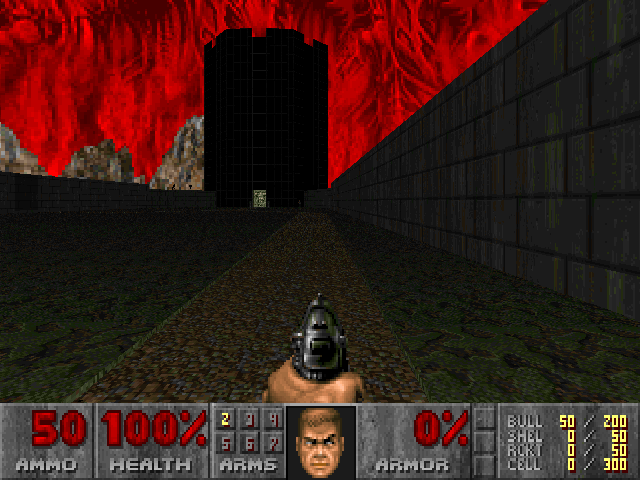
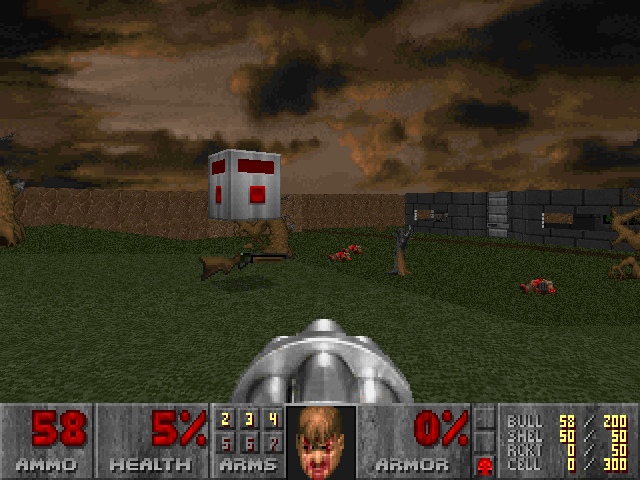
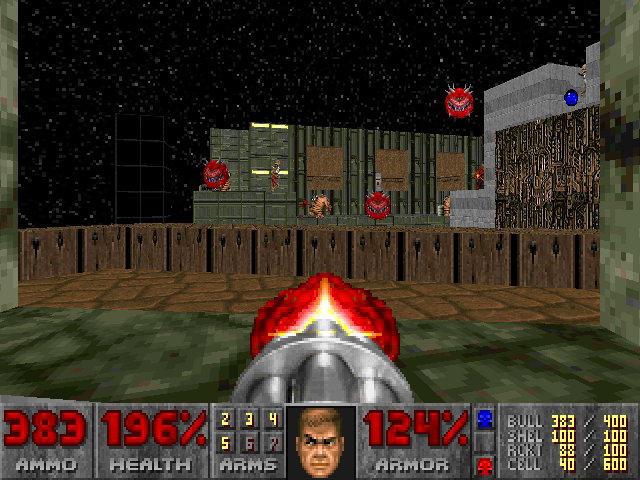

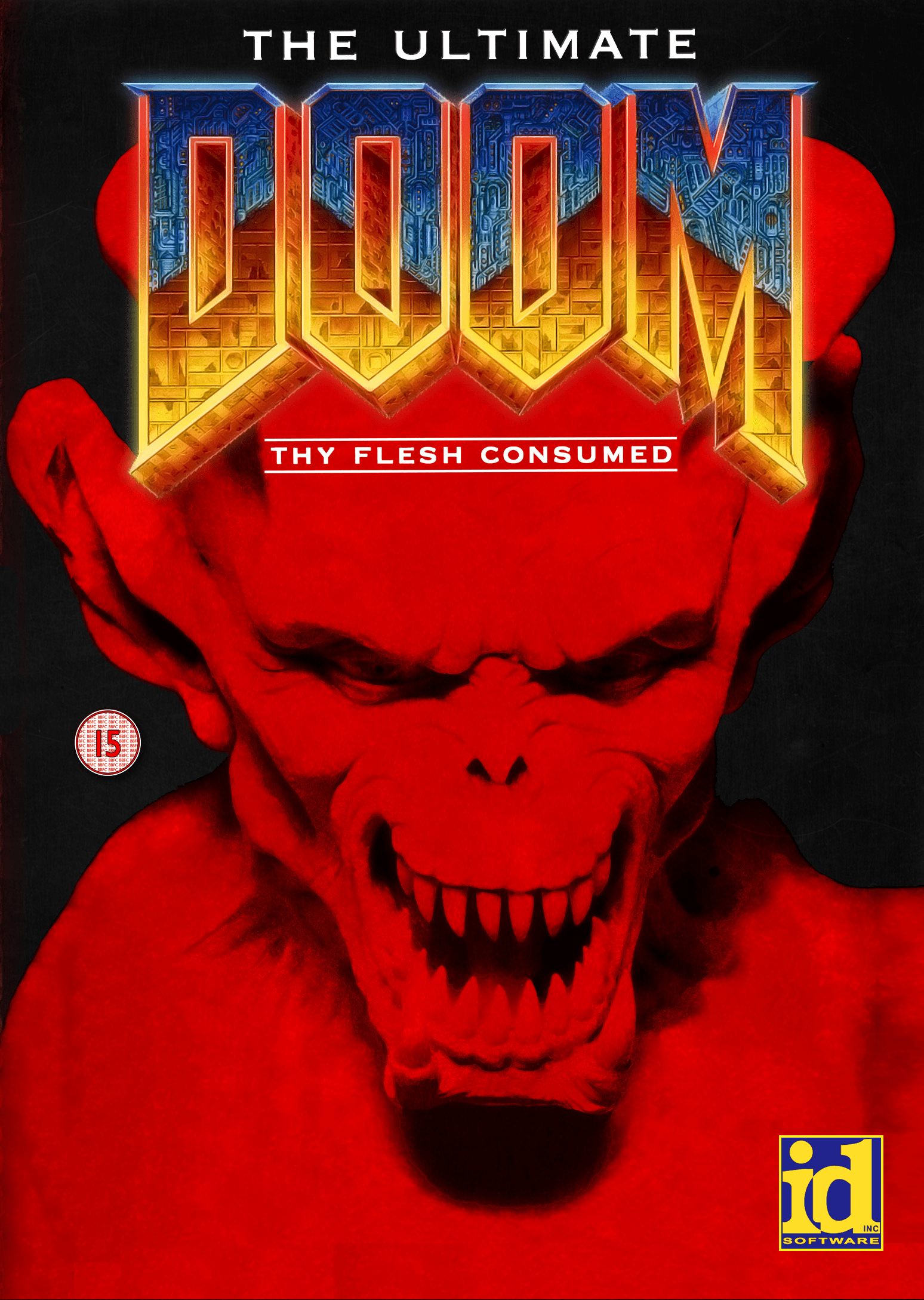
Thy Flesh Consumed is the fourth and final episode in The Ultimate Doom, made available in a retail distribution, as well as in the form of a free upgrade to owners of the registered version of Doom. With the exception of the secret level (and the levels exclusive to the Sony Playstation version), all the level names, and the episode title, are phrases taken directly from the Bible. The list was compiled by Kevin Cloud, and John Romero assigned names to the individual levels. This episode was also Tim Willits' first contribution to the Doom series, as he joined id Software after the release of the original Doom and Doom II.
The episode is both a sequel to Doom and a prequel to Doom II. It chronicles the Doomguy's battles against the legions of demons that the Spider Mastermind had sent through the doorway between Hell and Earth, the very same gateway that the player had earlier used to return to his home planet. Ultimately, though the player is victorious, inflicting heavy losses on the invaders and avenging the death of his pet rabbit Daisy, it turns out to be an empty victory as the demons have already overrun all the major cities, and the stage is set for Hell on Earth.
The episode and level names were taken from the following passages in the King James Version of the Bible:
Proverbs 5:11 - And thou mourn at the last, when thy flesh and thy body are consumed.
Proverbs 15:24 - The way of life is above to the wise, that he may depart from Hell beneath.
Psalm 139:22 - I hate them with perfect hatred: I count them mine enemies.
Matthew 13:49 - So shall it be at the end of the world: the angels shall come forth, and sever the wicked from among the just
James 3:8 - But the tongue can no man tame; it is an unruly evil, full of deadly poison.
Luke 16:30 - And he said, Nay, father Abraham: but if one went unto them from the dead, they will repent.
Psalm 139:20 - For they speak against thee wickedly, and thine enemies take thy name in vain.
Revelation 6:8 - And I looked, and behold a pale horse: and his name that sat on him was Death, and Hell followed with him. And power was given unto them over the fourth part of the earth, to kill with sword, and with hunger, and with death, and with the beasts of the earth.
Proverbs 5:9 - Lest thou give thine honour unto others, and thy years unto the cruel.
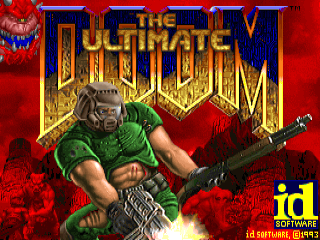
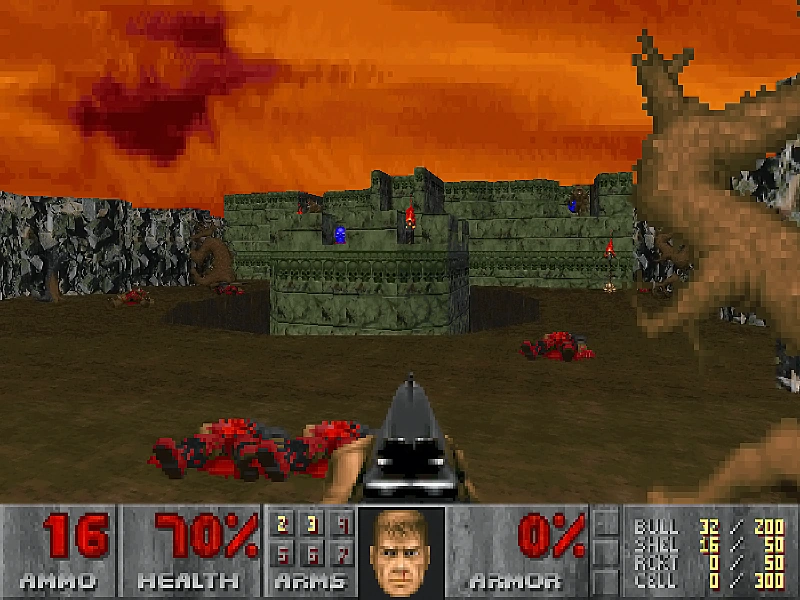
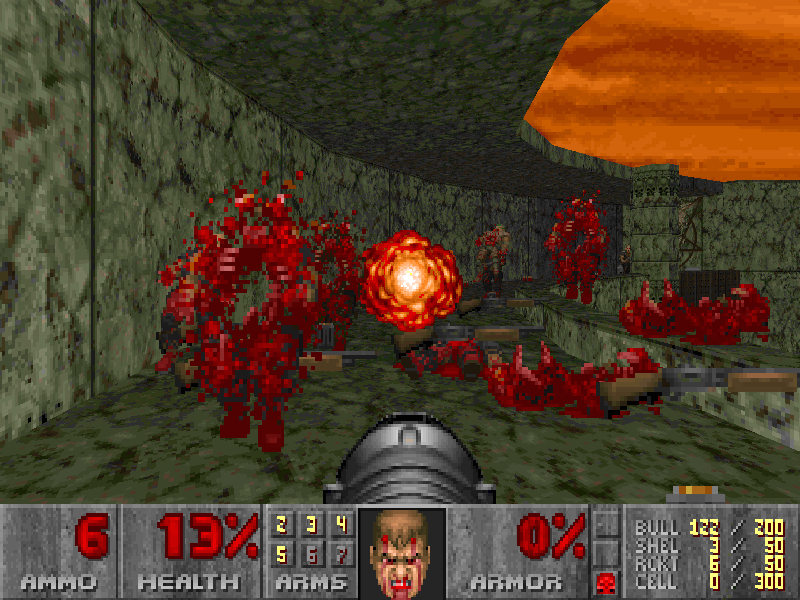

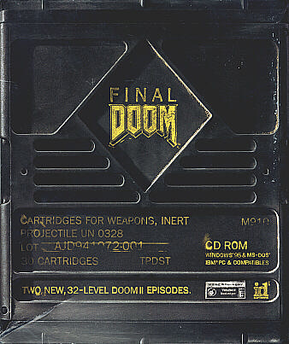
Final Doom is a pair of standalone Doom II modifications, TNT: Evilution and The Plutonia Experiment, which include full sets of new levels, some new graphics and textures and some new music in the former case, in addition to most of the resources from Doom and Doom II. It was published on June 17, 1996 by id Software under the initiative of John Romero and developed by members of the fan community belonging to TeamTNT.
TNT: Evilution was developed independently by TeamTNT, and was purchased by id Software when it was practically complete. The Plutonia Experiment, on the other hand, was completed specifically for Final Doom after its authors showed some of the id Software developers an incomplete set of levels. Its two authors, while part of TeamTNT and also contributors to Evilution, produced Plutonia independently. The Plutonia Experiment is significantly harder than TNT: Evilution.
Each of the two standalone IWADs is presented as a sequel to Doom II, referencing events from the original game in their background stories, particularly the invasion of Earth, but without referencing each other in any way. Contrary to what many believe, Final Doom does not require the original Doom II in order to be played; although it is possible to use Final Doom IWADs as PWADs with Doom II.
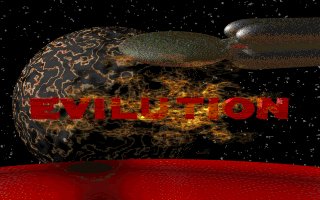
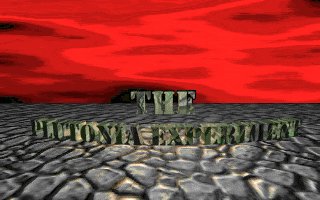
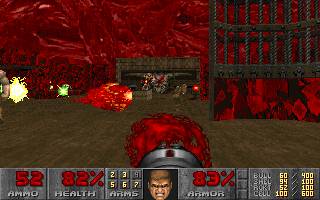


Doom 64, released April 4, 1997 for the Nintendo 64, is a sequel to Doom II. The game has all new graphics and runs on a modified Doom engine, based on the Sony PlayStation port. Doom 64 was released by Midway, in cooperation with id Software. GT Interactive Software distributed the European PAL version of the game, which was released on December 2, 1997.
Doom 64 was developed with close cooperation between Midway Games and id Software, with the latter studio providing some creative oversight and technical assistance. Programmer Aaron Seeler in particular worked closely with John Carmack on the game's 3D rendering engine. The plot focuses on events following the original games in the series. An evil entity known as the Mother Demon has survived and brought back the decaying dead creatures the player once killed. It is up to him, the lone space marine, to stop the legions once again.
A Nintendo Switch port (originally intended to ship alongside Doom Eternal on November 22, 2019) was announced on September 4, 2019. This was later announced on October 8 as having been delayed until March 20, 2020, along with Doom Eternal, and was added to that game's pre-order bonuses. In addition, it was announced that the port would be released for PC, Microsoft Xbox One, and Sony PlayStation 4 at that time.
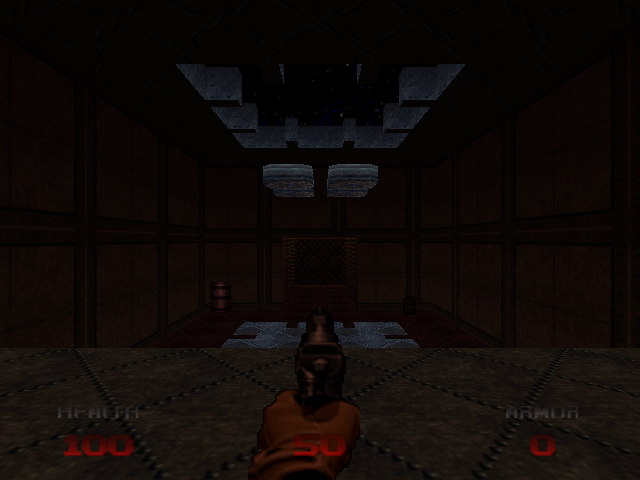
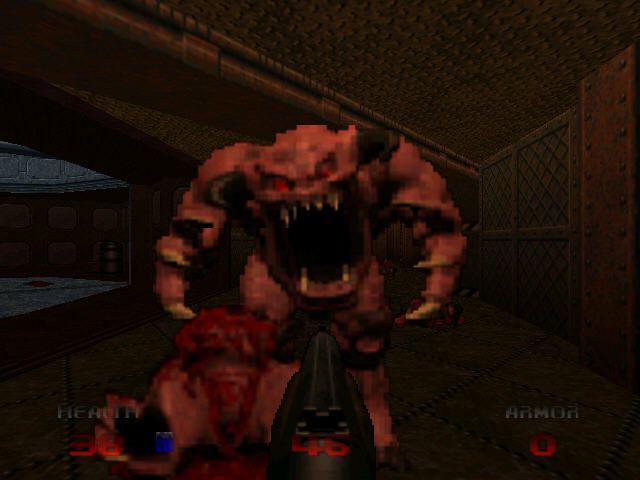


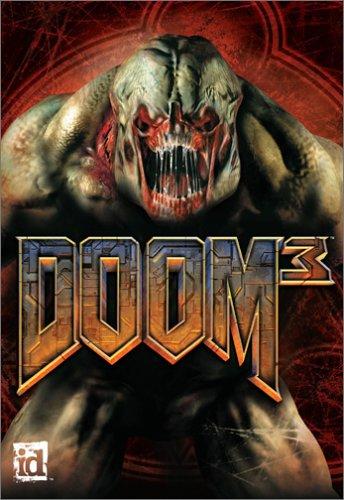
Doom 3, despite its numbering, is a re-imagining of the original Doom, with a completely new game engine and graphics. Doom 3 focuses on slow methodical gameplay, as opposed to the “run and gun” feel of its predecessors. It received a positive reception for its fear inspiring atmosphere and groundbreaking graphics, but it was also criticized for its otherwise simplistic gameplay, clichéd horror effects, and pervasive darkness.
Doom 3’s gameplay was not as fast-paced as the games before or after it. Almost all of the game is extremely dark, and there is no light amplification visor, nor do weapons have a flashlight attachment. Instead the player must rely on, rather infamously, a flashlight that can only be used in place of a weapon. There are few tactics involved other than grabbing the biggest weapons. Much of the game takes place in dark close-quarters with demons ambushing from every direction. By contrast the Hell level of the game is considered by many to be the best, as it is more similar to the Doom games of the past, featuring more open areas and making use of unique effects.
The game was a commercial success for id Software, with the planned total revenue estimated by Activision at $20 million. It was one of the top selling games of 2004, alongside Halo 2 for the Xbox and Half-Life 2. The financial success was bolstered by the near-record number of pre-orders placed for the game.
Despite commercial success, Doom 3 had a notably critical reception, with some commonly named shortcomings including but not limited to:

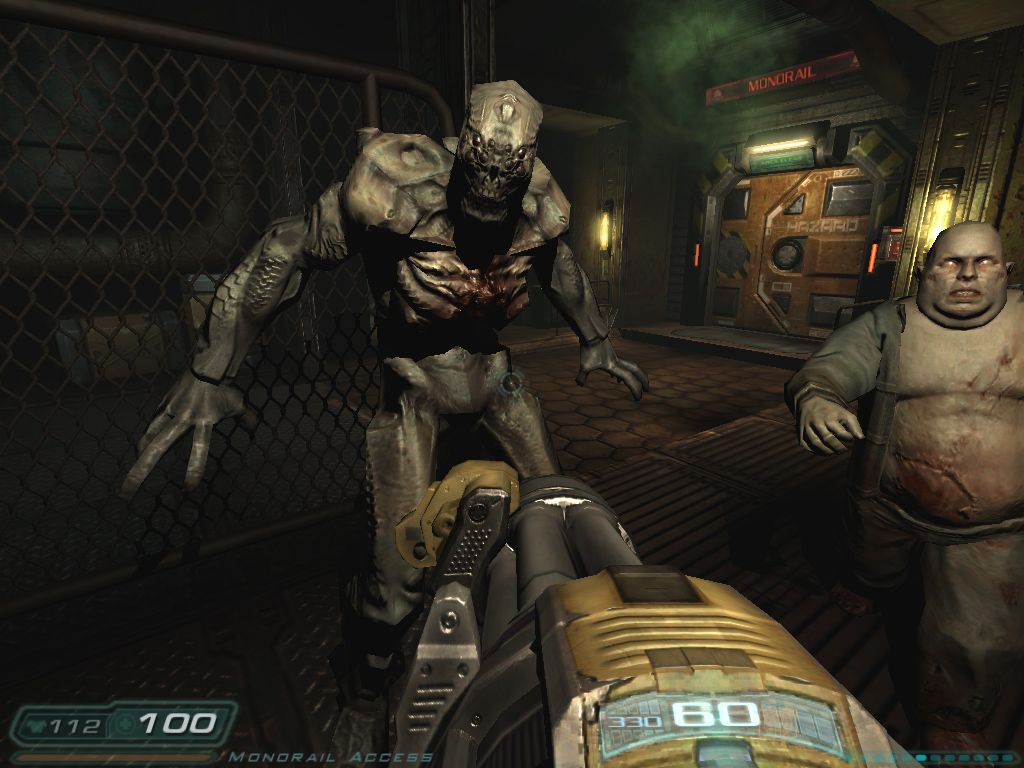


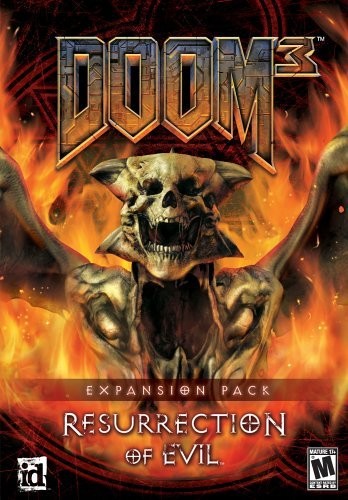
Doom 3: Resurrection of Evil (sometimes abbreviated as RoE) is an expansion pack for Doom 3 developed by Nerve Software and released on April 4, 2005 in North America, and on April 8 of the same year in Europe. The PC version was sold as a dependent product, requiring ownership of Doom 3 in order to install. A stand-alone Xbox version was later released on October 5, 2005, and included ported versions of The Ultimate Doom, Doom II, and the Master Levels for Doom II as bonuses on the disc.
Two years after the demonic invasion and destruction of Mars City as depicted in Doom 3, research on Mars has resumed, led by whistleblower Dr. Elizabeth McNeil, who previously alerted the UAC to Malcolm Betruger's activities. Once more, strange occurrences haunt the facility. Red Team, a Marine search team, breaks into a chamber deep within Mars, finding the Artifact - a weapon from Hell that the Ancients sealed away long ago. The lead Marine, upon touching the Artifact, awakens it. A blast wave kills most of his team and reaches into Hell, alerting the Maledict, Dr. Betruger's new form. The Maledict sends the three Hunters to retrieve the Artifact as Hell begins to invade Mars once again.

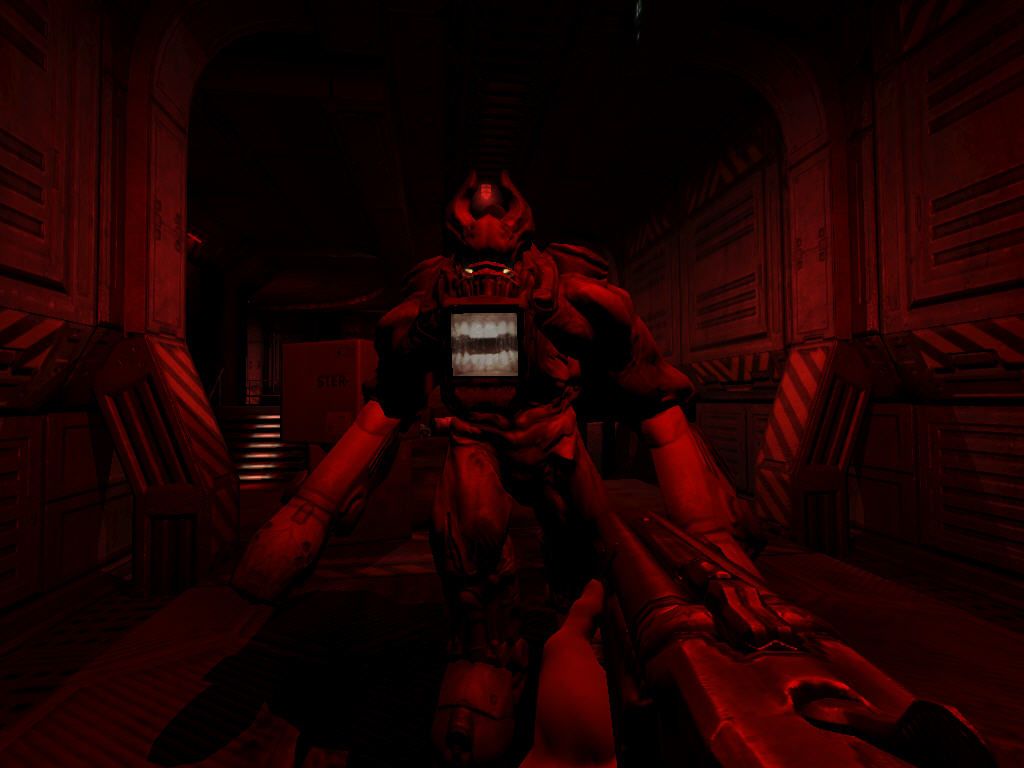



Doom RPG is a game designed for Java cellphones, and its story is set in the Doom universe. The game was developed by Fountainhead Entertainment and id Software and published by JAMDAT Mobile Inc. EA Mobile went on distributing the game after the company had acquired JAMDAT. The game was released at the same time as the Doom movie in October 2005, and in the UK in November 2005. In 2007, all five developers of Fountainhead became id Mobile.
The game retains many of the elements of the original Doom games, and is likewise played from a first-person perspective. However, the game is fundamentally different in that it is a turn-based RPG. All combat and movement is turn-based, allowing the player time to select their responses in combat. The player turns at 90 degree angles and moves space by space. Although visually similar to the original games, there is a greater emphasis on the plot. It is very important to speak to the scientists as well as marines and access computer terminals to obtain vital information in order to progress into the game, somewhat like in Doom 3.
John Carmack initially started development on Doom RPG after his wife bought him a new cellphone to replace the lost one he usually took with him to work at Armadillo Aerospace - he had resisted getting one, as he "[didn't] really like talking to most people." The bad Java demo games included on the new phone inspired him to investigate development in the J2ME environment which was then the dominant gaming platform in the mobile market. This suited his desire for a temporary change in scope after the development of Doom 3, and was supported by his previous experience with Java. After considering the chief limitations of the platform—a small maximum size for games, the non-immersive nature of small handheld devices, limited controls, and lack of multiplayer capabilities—Carmack settled on the Doom RPG concept, which he described as "Bard's Tale meets Doom", and developed a proof-of-concept prototype
The game was essentially trapped on mid-aughts cell phones until 2022, when a reverse-engineered port for PC was made by DoomWorld users.
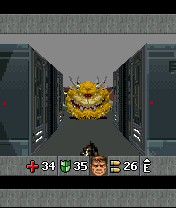
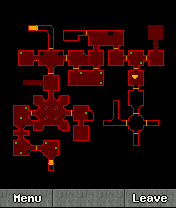
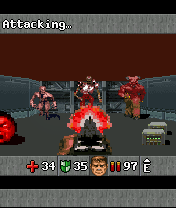

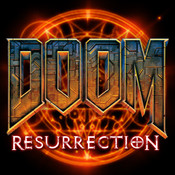
Doom Resurrection is an iOS first-person rail shooter game developed by Tom Mustaine's Escalation Studios in cooperation with the mobile games division of id Software. It was released on June 26, 2009. John Carmack led the development team. Doom Resurrection uses assets from Doom 3 and acts as a side story to the game.
The game stars an unnamed marine, a survivor of Bravo Team from the original Doom 3. He awakens after the ambush on his squad and is soon confronted by Dr. Garrett, who presents him Sam, a flying droid capable of opening doors and hacking computers. Together with Sam, the survivor makes his way through the Mars facility, battling zombies and demons on his way through the base. His goal is to reach a port where a spaceship full of surviving members of the UAC facility is preparing to blast off. On his way, the marine meets a few survivors, collects valuable information through Sam, and visits Hell, where he closes the demon-spawning portals.
The player is taken through a total of eight linear arcade-style rail shooter stages wherein the player can tilt the device to aim and hit touch areas in the corners of the screen to fire his weapon or reload. Other touch areas on the screen appear in contextual situations similar to quick time events, allowing the player to dodge attacks or take cover from enemy fire. Gameplay typically lasts four to six hours depending on the difficulty selected from the four levels available. Performance ranks are assigned at the end of each level.

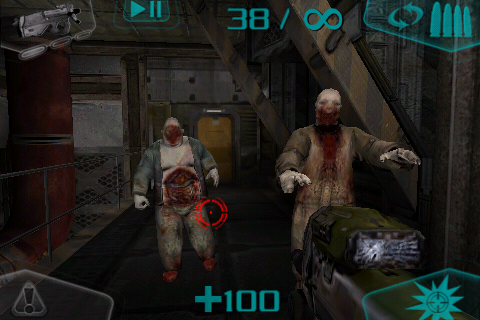
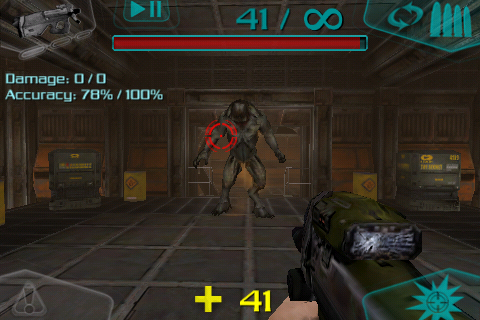


Doom II RPG is a sequel to Doom RPG. It was released for Java Micro Edition on November 23, 2009, BlackBerry phones on December 11, 2009, Windows Mobile on February 1, 2010, iPhone and iPod Touch on February 8, 2010. It uses the Wolfenstein RPG mobile engine. It was developed by id Software partners Fountainhead Entertainment via merger with id Mobile. The iPhone version of Doom II RPG contains a digital comic book.
Being a successor to the aforementioned game, Doom II RPG retains much of the gameplay elements. It is a turn-based shooter with RPG elements from a first-person perspective, unlike its predecessor, the player can select three player characters with different starting statistics. The player takes turns to perform specific actions: go north/south/west/east, ransack a corpse, attack, talk to somebody, skip a turn, consume a nano drink, pick up an item etc. Turning left or right spends no turns. After you have performed an action, you wait until each monster nearby has performed its action. Monsters have varying movement speed, range, and attack burst, and - with the exception of bosses and certain monsters - are ordered by rank differentiated by colors. There is no time limit for turns, allowing the player to analyze their strategy and perform their next move.
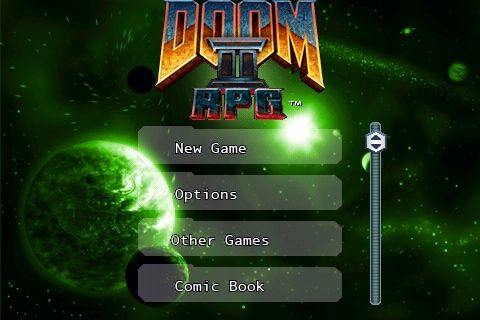
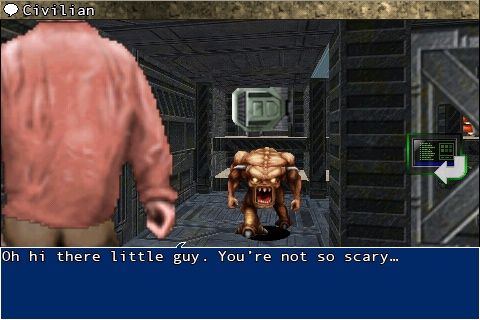
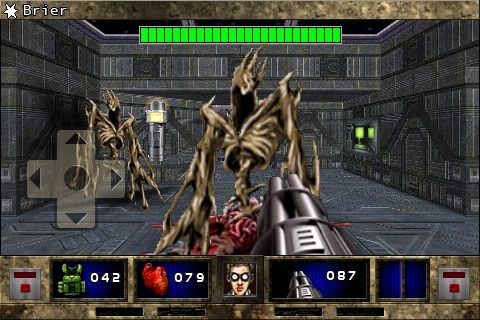

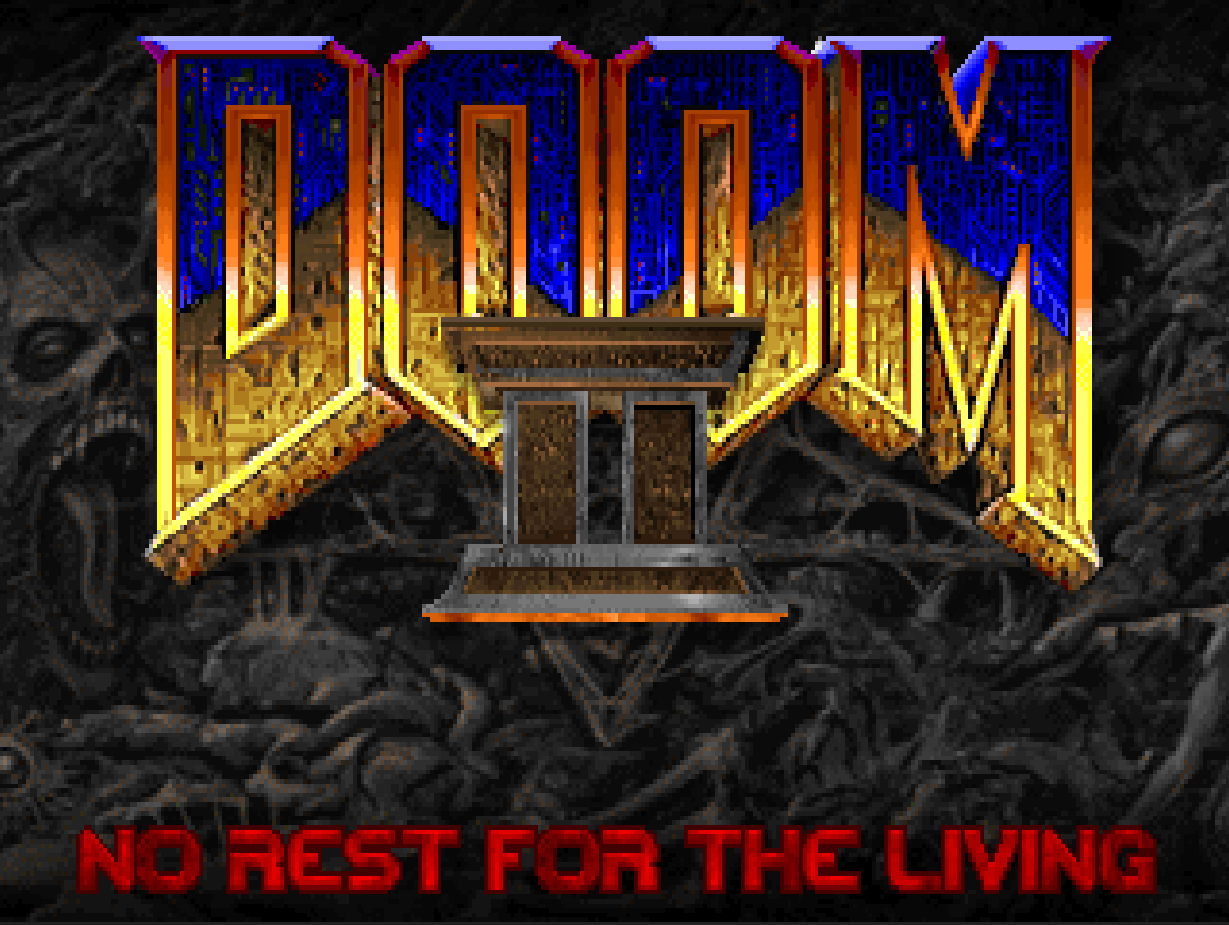
No Rest for the Living is a Doom II expansion set originally developed by Nerve Software's Arya Iwakura and Russell Meakim for the release of Doom II on Xbox Live Arcade. It is also now available as part of Doom 3: BFG Edition, in the PlayStation 3 release of Doom Classic Complete, and as an add-on for the Doom Classic Unity ports.
The episode consists of nine levels in all, eight standard levels and a single secret level, as a homage to the similarly structured nine-map episodes in the original Doom, particularly Knee-Deep in the Dead. As Doom II did not have episodes per se calling No Rest for the Living an episode is technically a misnomer. Indeed, the episode selection screen reads "Which expansion?", listing options "Hell on Earth" and "No Rest for the Living", selectable at the inception of a new game, in a fashion similar to Doom's episode selection. Selecting "Hell on Earth" propels the player into the classic 32 map Doom II campaign, whereas selecting "No Rest for the Living" starts the new 9 map addition. This expansion selection prompt is also displayed when the player intends to load a previously saved game, with each campaign having its separate save game directories.
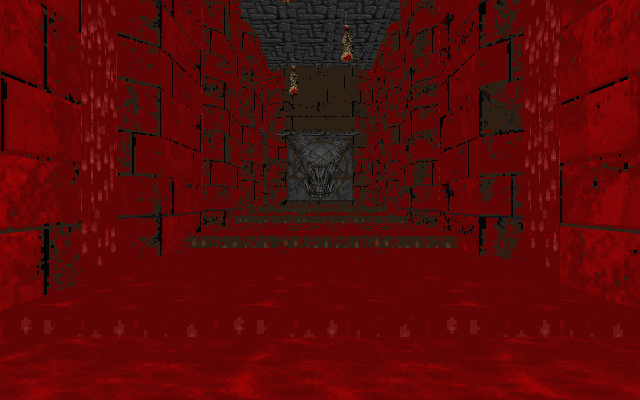

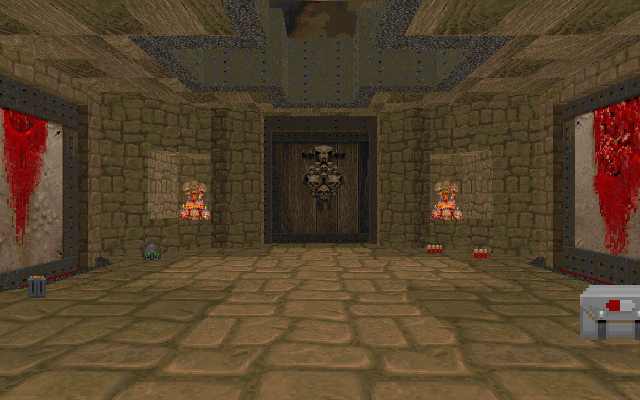


Doom 3: BFG Edition is a re-release of Doom 3, released on October 16, 2012 in North America and on October 19, 2012 in Europe. It is currently available for the PC, PlayStation 3, Xbox 360, NVIDIA SHIELD Android TV and NVIDIA SHIELD tablet. The BFG Edition also features The Ultimate Doom, Doom II, and No Rest for the Living as bonus. These run using an integrated version of the original Doom engine called Doom Classic, based on the code used by the Xbox 360 Doom and Doom II ports.
The source code was released a little over a month later, on November 26, 2012. It has since been ported to Linux, Mac OS X, and FreeBSD.
On July 26, 2019, Doom 3: BFG Edition was released as Doom 3 for PlayStation 4, Xbox One, and Nintendo Switch. These releases do not include the classic Doom ports or multiplayer functionality.
BFG Edition features numerous changes and additions to the original game, which include but are not limited to:
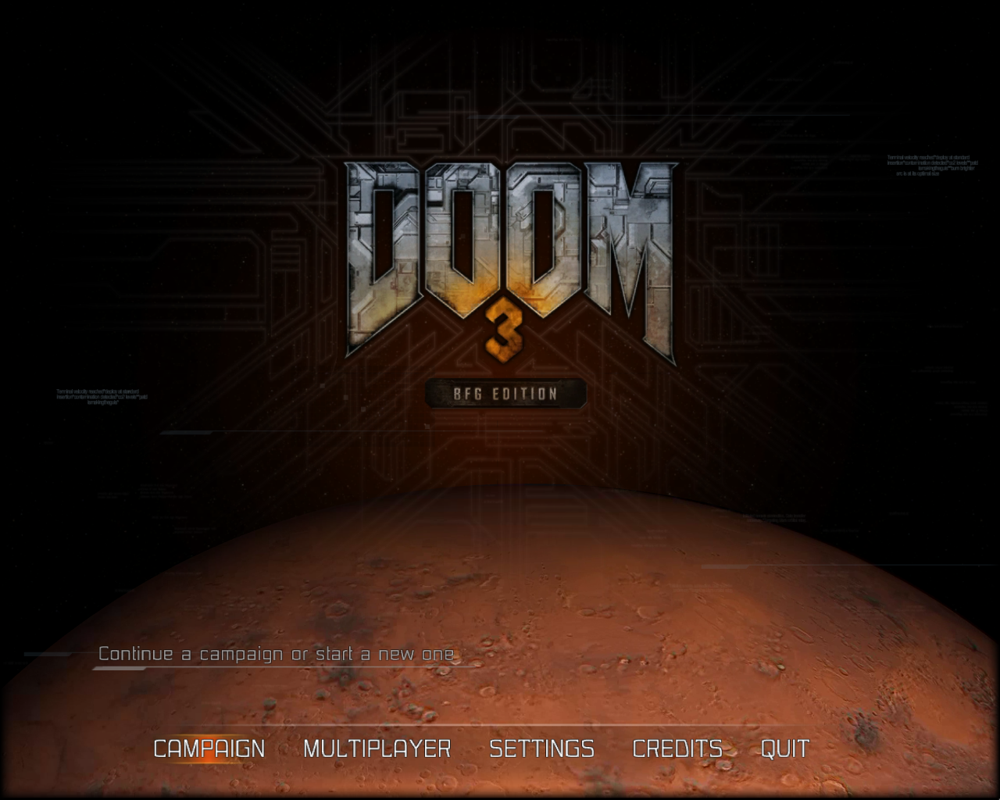
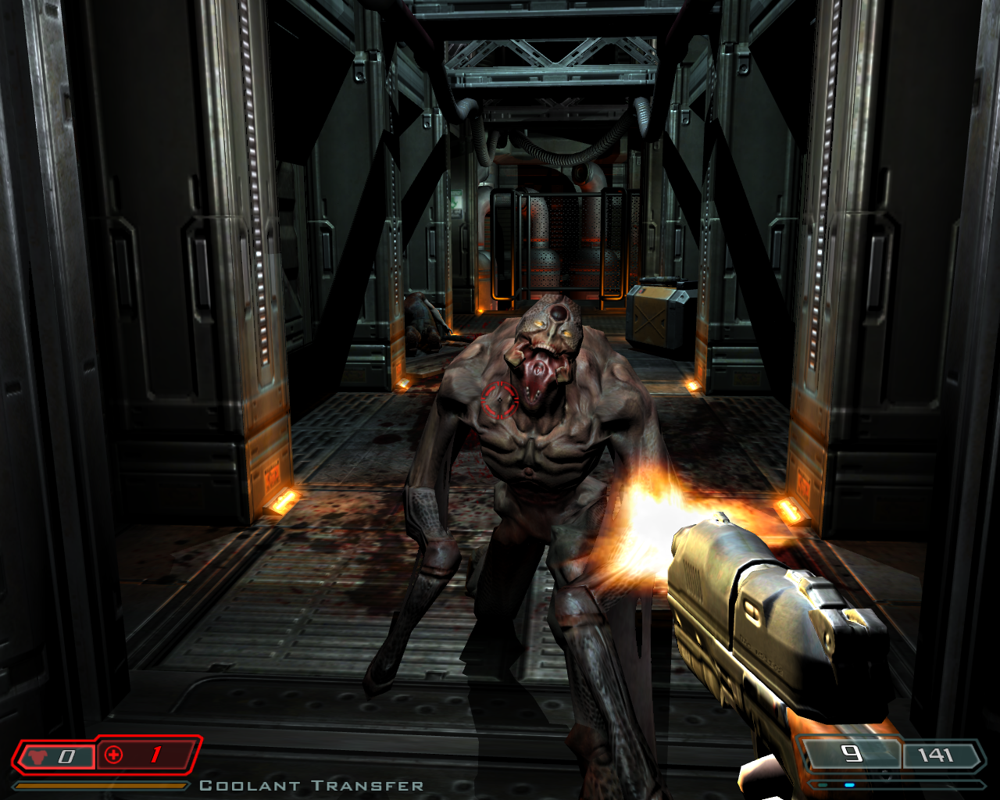
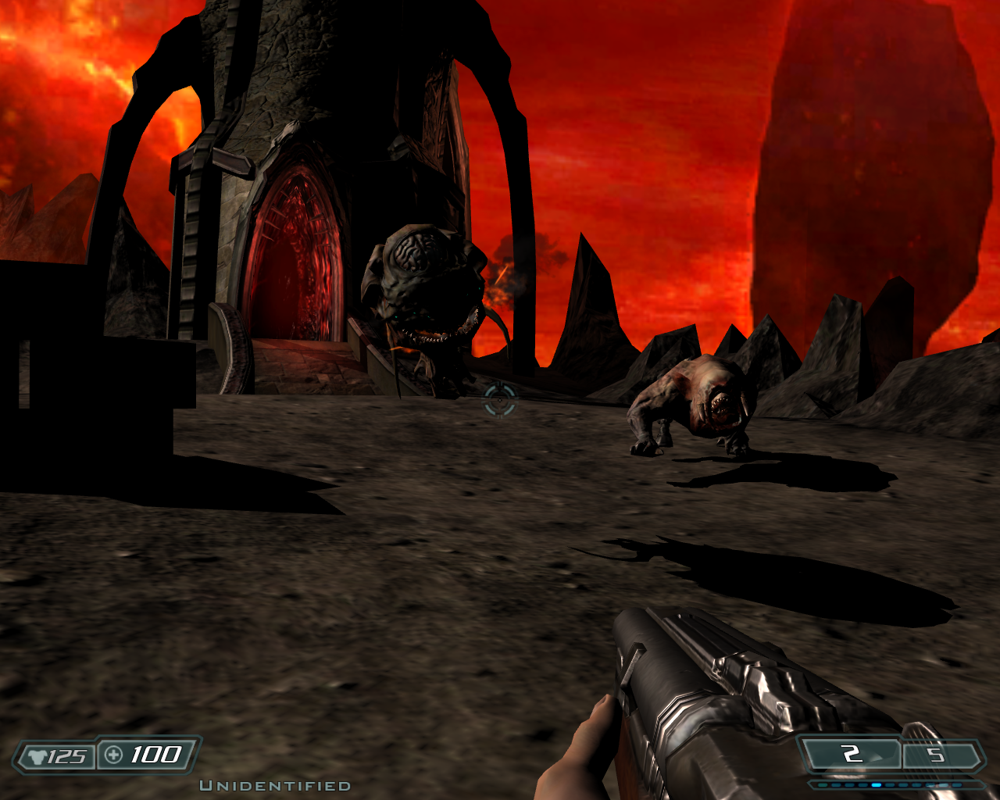


Doom (previously titled Doom 4) is a new installment in the Doom series released worldwide for Microsoft Windows, PlayStation 4, and Xbox One on May 13, 2016. An additional port to the Nintendo Switch by developer Panic Button was released on November 10, 2017. The game was added to the Google Stadia streaming service on August 18, 2020. It is the third major game created by id Software and published by Bethesda Softworks since their acquisition by ZeniMax Media, following Rage and Doom 3: BFG Edition. Early planning and development began in August 2007, and continued into 2017 with the release of patches, downloadable content packs, and planned updates. The game features a story detailing the invasion of the UAC Mars Base by the forces of Hell.
The new Doom has been built on an engine which id Software has dubbed id Tech 6, a successor to their id Tech 5 engine. Its gameplay resembles the action-oriented tone of the classic Doom games much more than the horror style of Doom 3, with a heavy emphasis on strong weapons, fast and agile player movement, and quickly paced encounters with large groups of foes. Graphically and architecturally, its advanced designs are aesthetically closer to Doom 3 in some regards, but with many deliberate nods to the original series, as is particularly seen in the enemy designs.
Doom, previously titled Doom 4, was confirmed to be in development by id Software as early as May 7th, 2008. Very little information was given on the development process, and by 2013, Doom 4 was declared to be in "development hell" after reports of mismanagement. Those who worked on the early version of Doom 4 compared it to gritty, scripted military shooters such as Call of Duty. Shortly after Doom 4 was declared to be in development hell, key members of id Software began to resign, including CEO Todd Hollenshead, John Carmack and many other development staff. Doom seemed as if it would never be released, until the multiplayer beta was announced. People who pre-ordered copies of Wolfenstein: The New Order were promised access to the beta test for Doom. Although the information was vague, it was the first news regarding Doom 4 (now re-branded simply as "DOOM") since Kotaku's article in 2013. The game would go on to be shown to a private audience at QuakeCon 2014, followed by a public reveal with the first solid information on the game appearing at E3 2015, where publisher Bethesda held its first ever full-scale presentation. The closed beta test began on March 31, 2016, and ran through April 3. A beta open to all Steam, Xbox Live, and Playstation Network users followed shortly after, beginning on April 15 and lasting until April 18. The full game was released on May 13, 2016, to glowing critical reception.
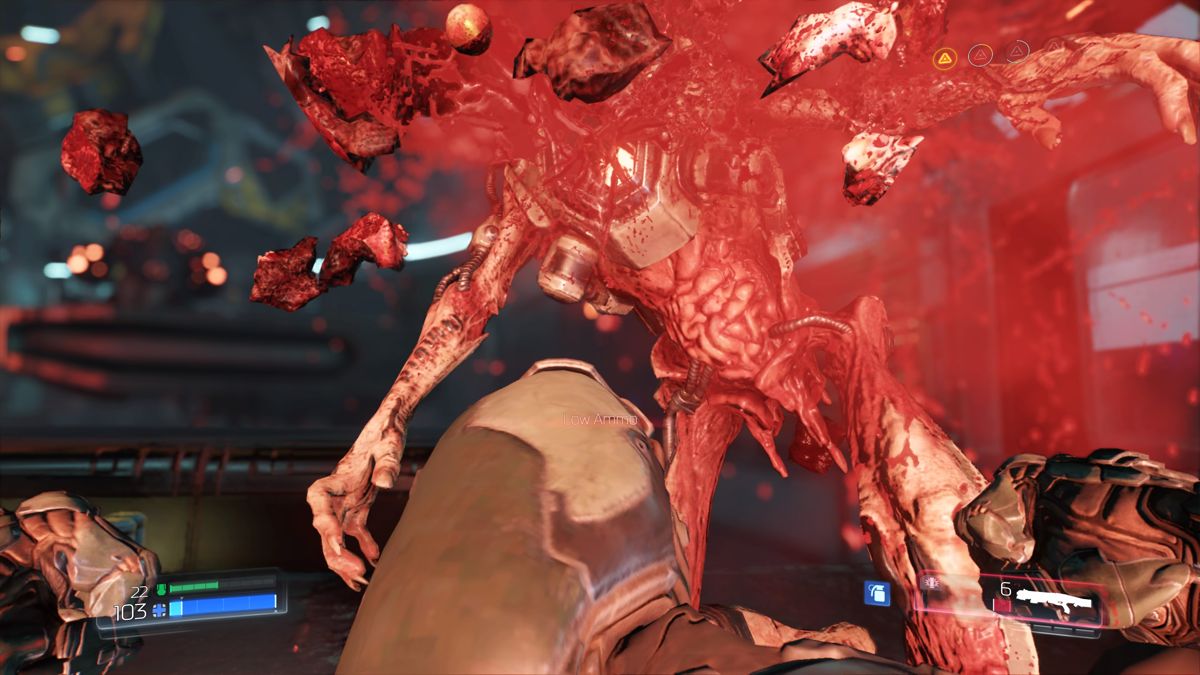
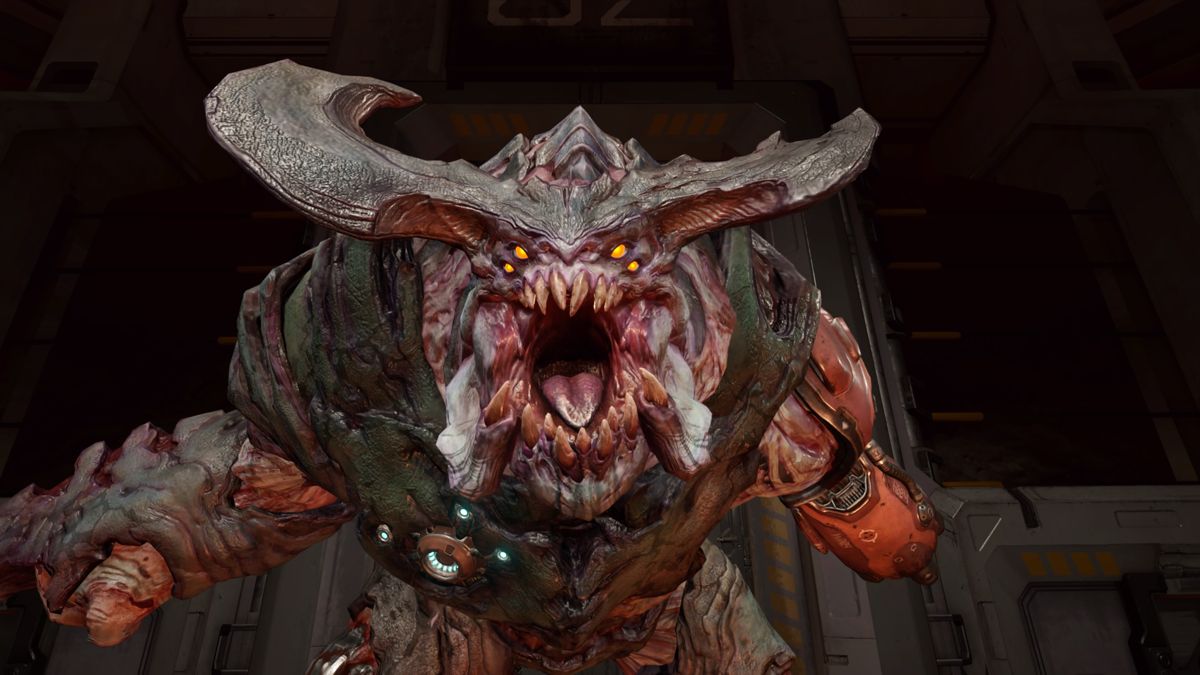
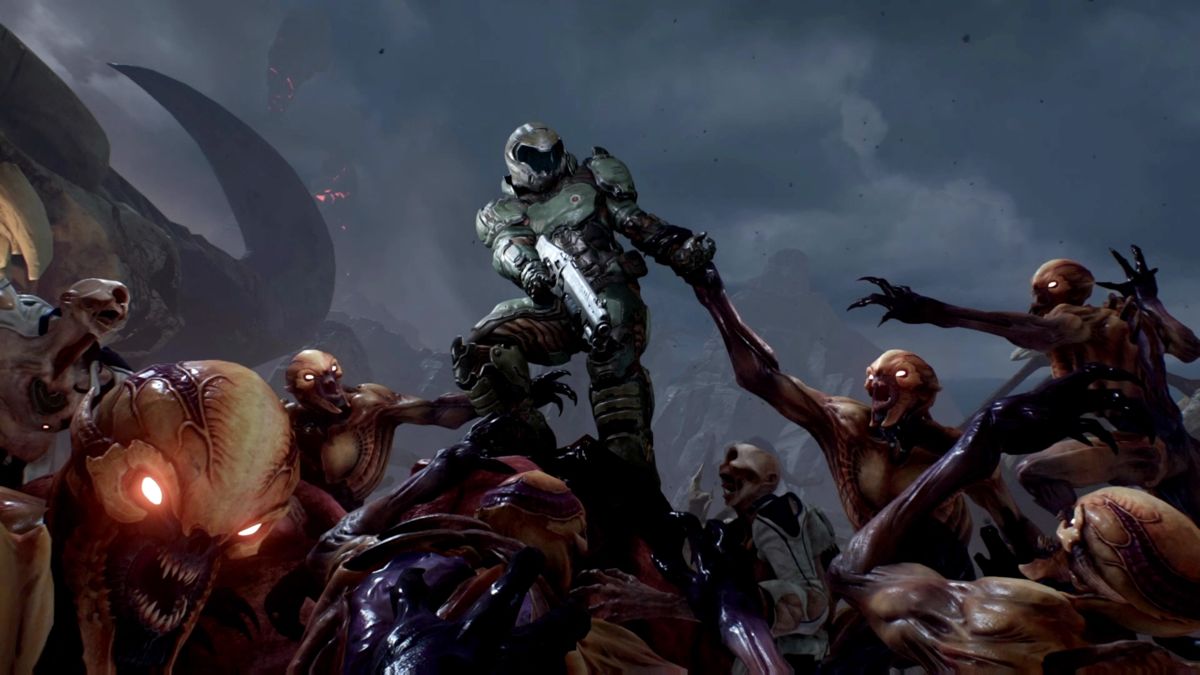

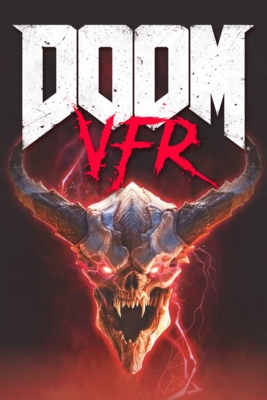
DOOM VFR is a virtual reality game set during the events of DOOM (2016), developed by id Software and published by Bethesda on December 1, 2017. It is officially supported on the PC with the HTC Vive headset and wireless handheld controllers, and is also available for the PlayStation VR.
Players take contr ol of a UAC scientist, Dr. Peters, who is one of the last survivors of the demonic invasion of the UAC Mars Base up until he is killed during the beginning events of the game. However, his consciousness is automatically uploaded into the UAC's computer systems, a point from where he is able to control a cybernetic combat chassis, and is tasked with trying to maintain order in the facility and prevent a catastrophic failure of its systems.
DOOM VFR received generally positive reviews, praising its fast-paced action and satisfying VR combat, but critics were left wanting due to the game's short runtime of about three hours for a casual playthrough.
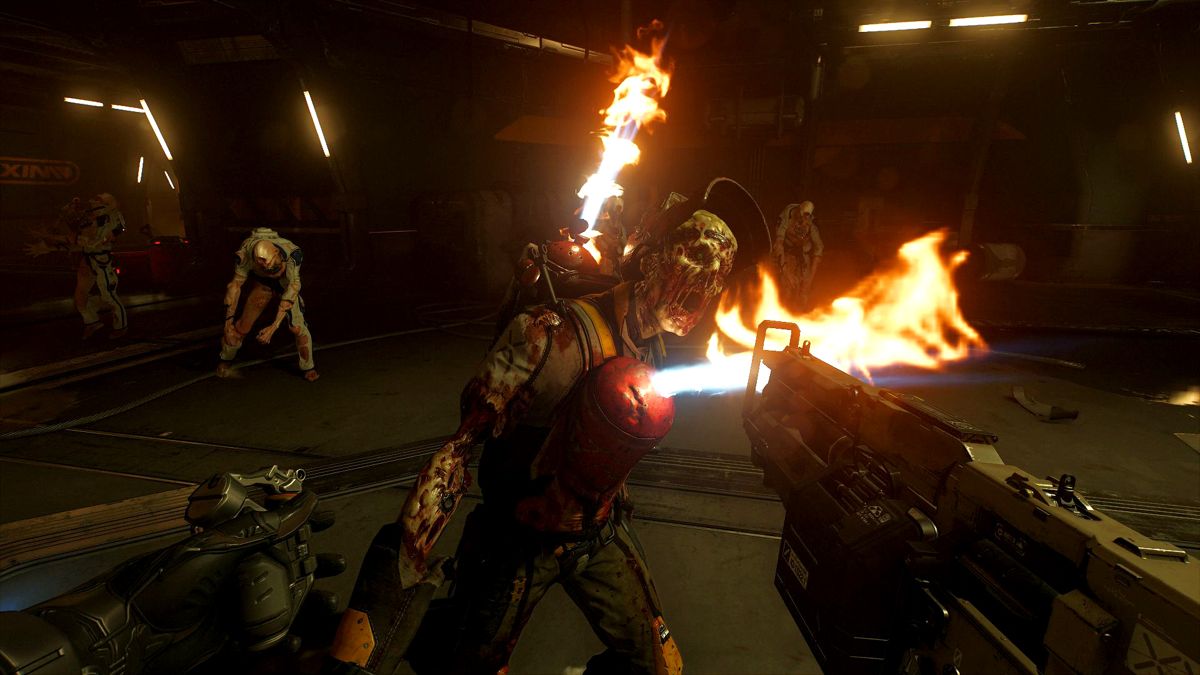
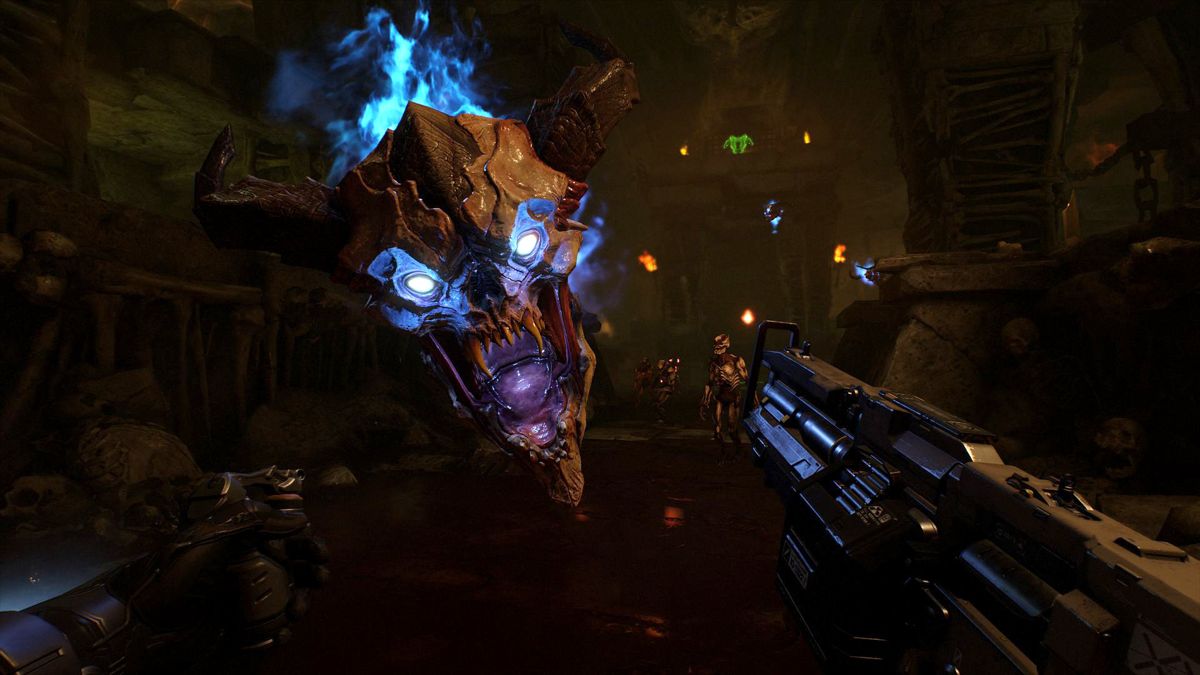
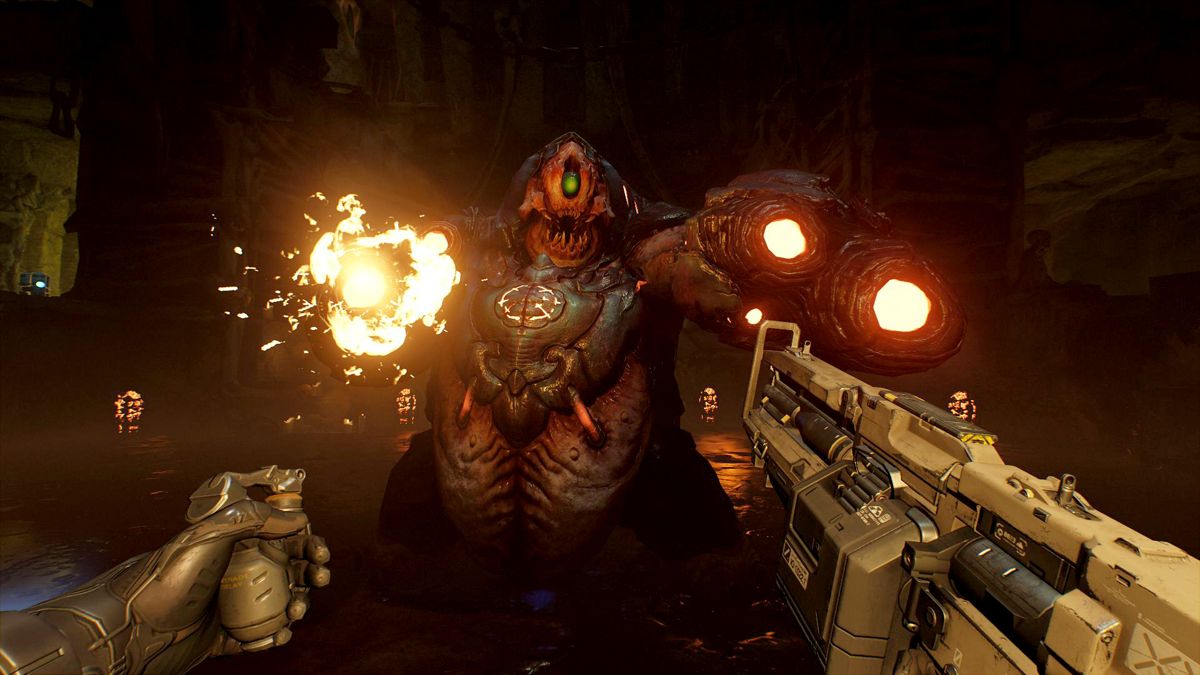

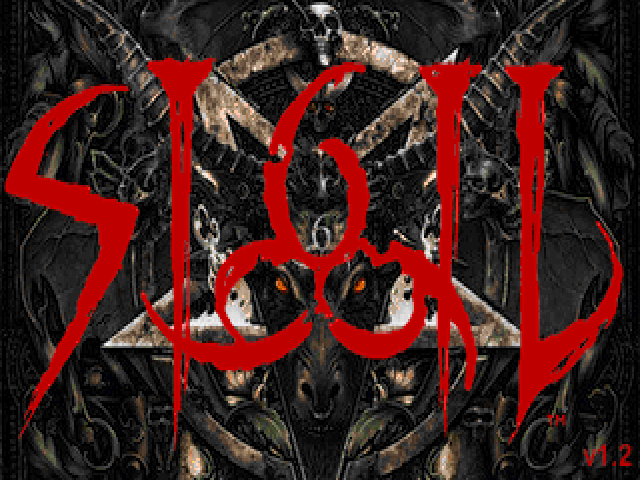
SIGIL (also styled SI6IL) is an episode WAD for Doom and Ultimate Doom that was released in limited editions on May 22, 2019, while the free release appeared on May 31, 2019. It was announced on Doom's 25th anniversary on December 10, 2018 by its designer, John Romero.
On December 11, 2019, Bethesda announced support for SIGIL as the first in a series of curated community WADs to be featured as an add-on for the Doom Classic Unity port, added alongside the official Final Doom and No Rest for the Living. The first version of the game allowing users to download SIGIL was released as an update on January 9, 2020.
A sequel, SIGIL II (tentative title), was announced on August 15, 2021.
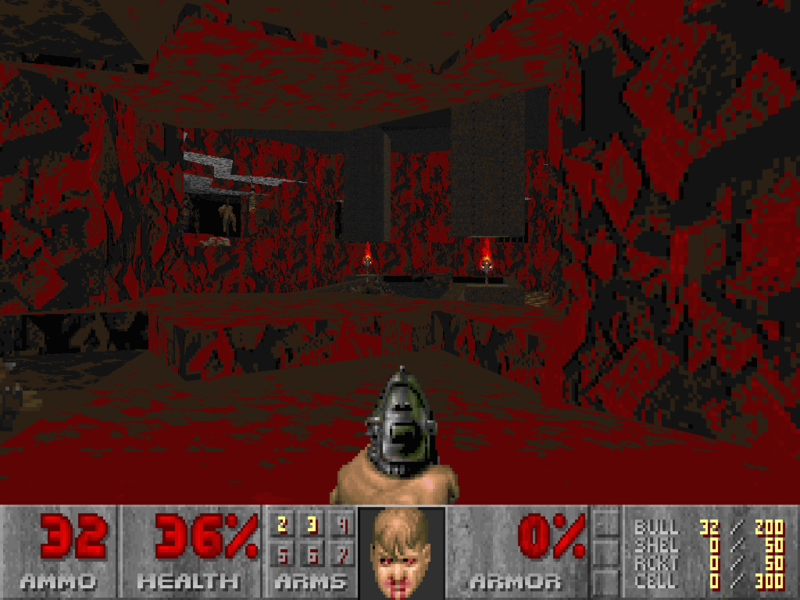

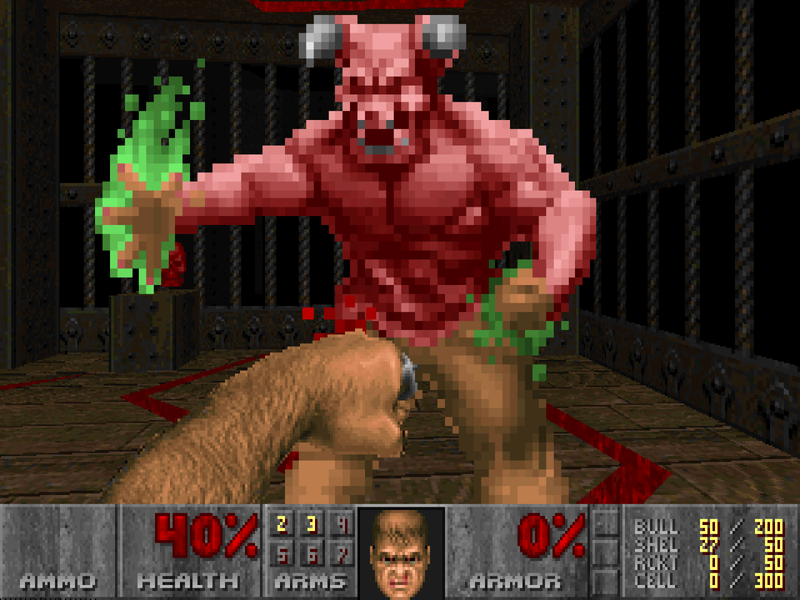


DOOM Eternal is a sequel to Doom (2016), announced by Bethesda and id Software at the BE3 presentation on June 10, 2018. Further information, including a gameplay reveal, was released at the 2018 QuakeCon convention keynote presentation on August 10.
Set two years after DOOM (2016), about 60% of the Earth has been conquered by the demonic invasion. The Earth military, re-organized under the command of Samuel Hayden's ARC, ultimately proves helpless in turning the tide of the battle and the majority of the human population is killed during the first month of the invasion. It is at this time that the Doom Slayer, accompanied by VEGA, arrives to save humanity by killing the three treacherous Hell priests, whom the Khan Maykr has sent to Earth to command the invaders and carry out the ritual that would plunge the Earth entirely into Hell.
DOOM Eternal received "generally favorable" reviews, according to review aggregator Metacritic. Some critics praised the campaign, graphics, level design, combat, soundtrack, and improvements over its predecessor, while others disliked the increased focus on storytelling and lore, and the platforming sections. Additionally criticised was the game's multiplayer component, Battlemode, which features one player versus several player-controlled demons. Many considered this a step back from DOOM's (2016) more traditional PvP deathmatch modes.
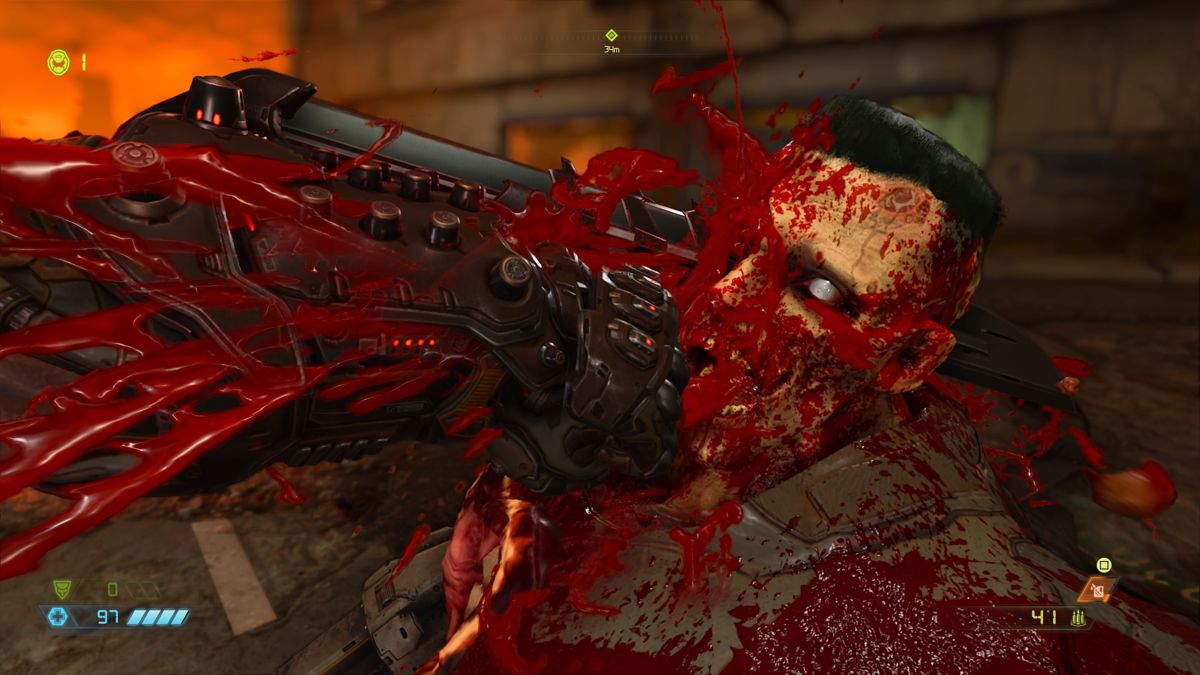
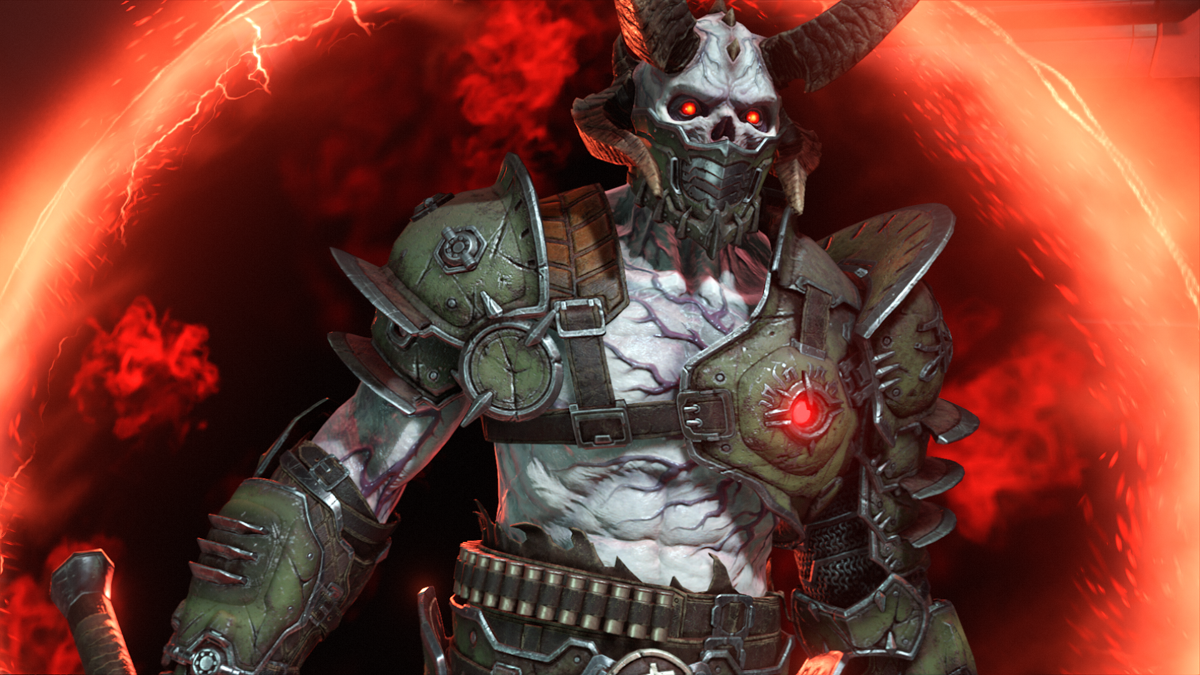
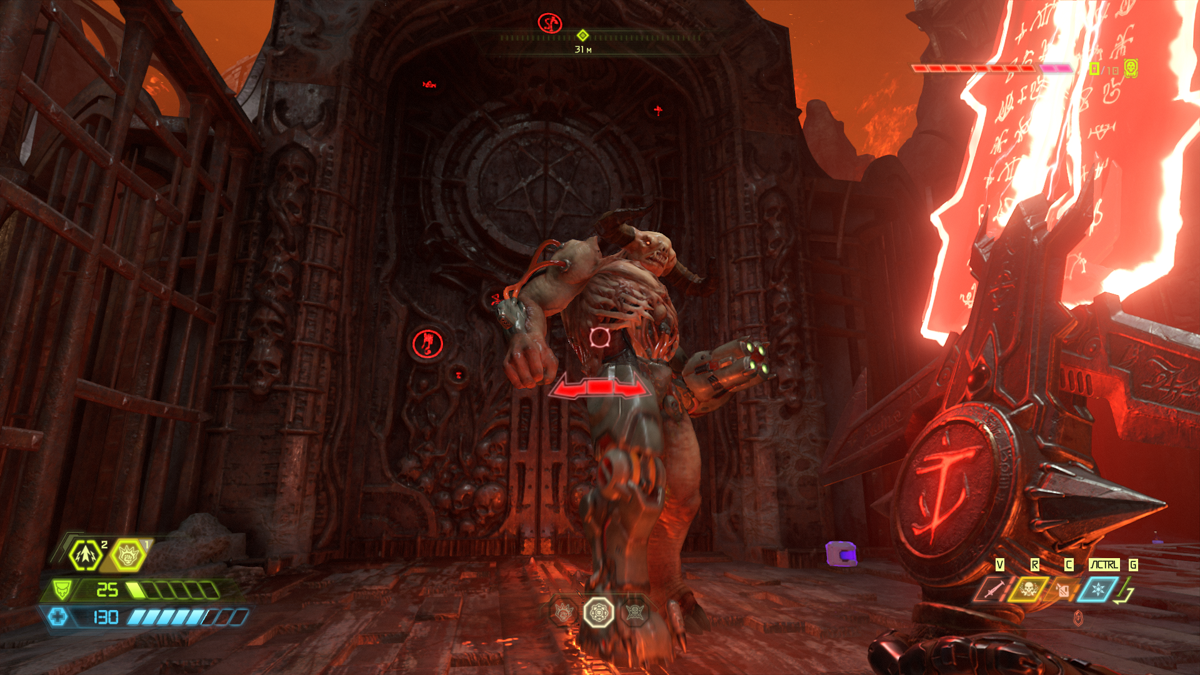

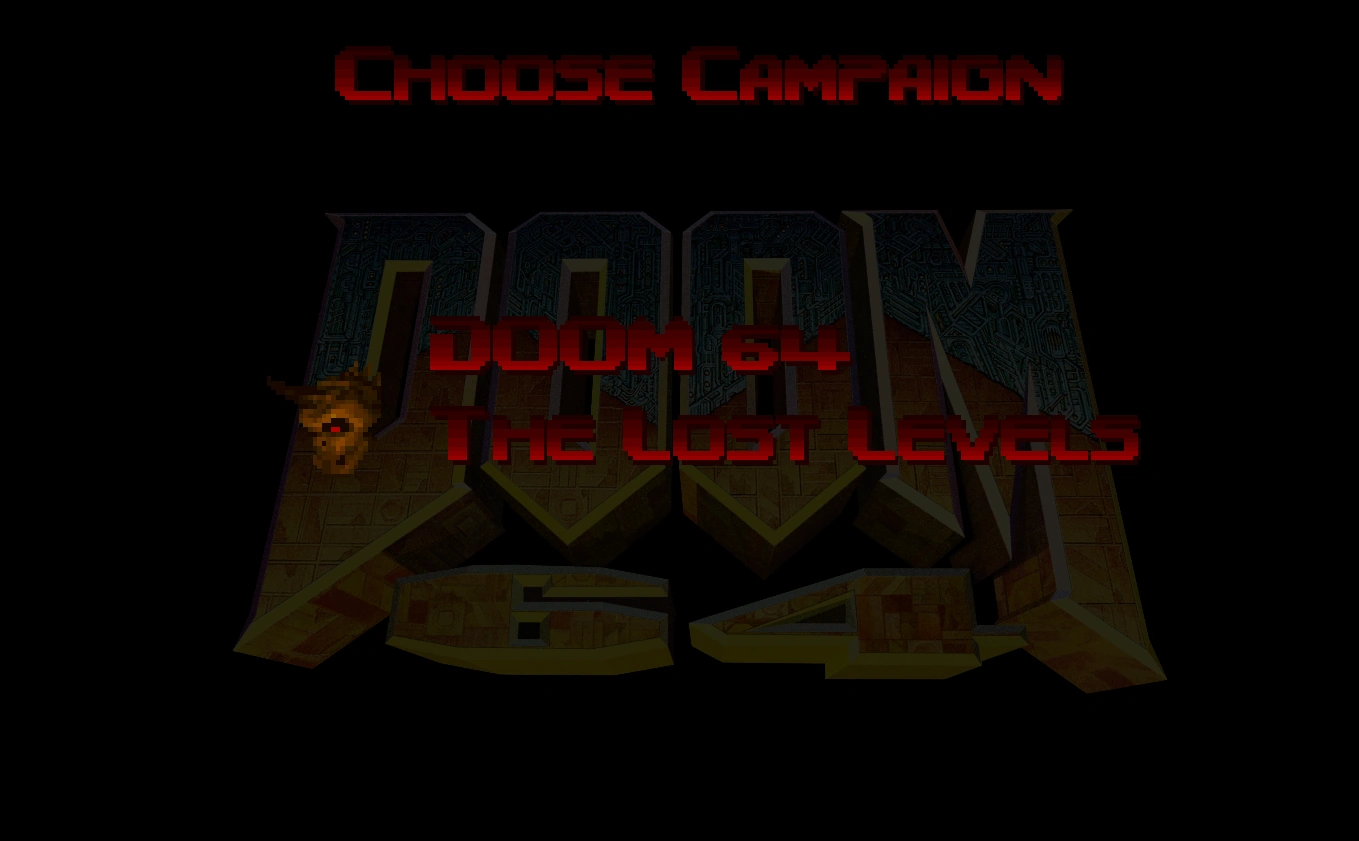
The Lost Levels is a new episode for Doom 64 added in the 2020 re-release. All maps in the episode were authored by Nightdive Studios employee and Doom community member Samuel Villarreal (Kaiser).
Taking place an indeterminate amount of time after the Doom marine slayed the Mother Demon in the original campaign, the beginning of the episode finds the marine stranded outside of Hell with none of his weaponry on a distant vacated UAC base on the surface of Sedna. This occurred through the powers of the Mother Demon's sister, known as the Sister Resurrector, who hoped to stop his campaign against Hell by sending him away. The marine must fight his way back into Hell, recover the Unmaker and the three Demon Keys, and then take his revenge in order to continue his quest against Hell.
The episode's ending makes reference to the Slayer Testaments of Doom (2016), implying that the journey of the Doom Slayer has begun:
"You had not expected to be torn from Hell so soon after your fateful decision.
Getting back there was your only concern. The plans of the Sister Resurrector to exterminate you have failed.
A grim vision takes hold of your mind as the demon carcasses steam in your wake. Stretched before you is a path of perpetual torment... A path through DOOM..."
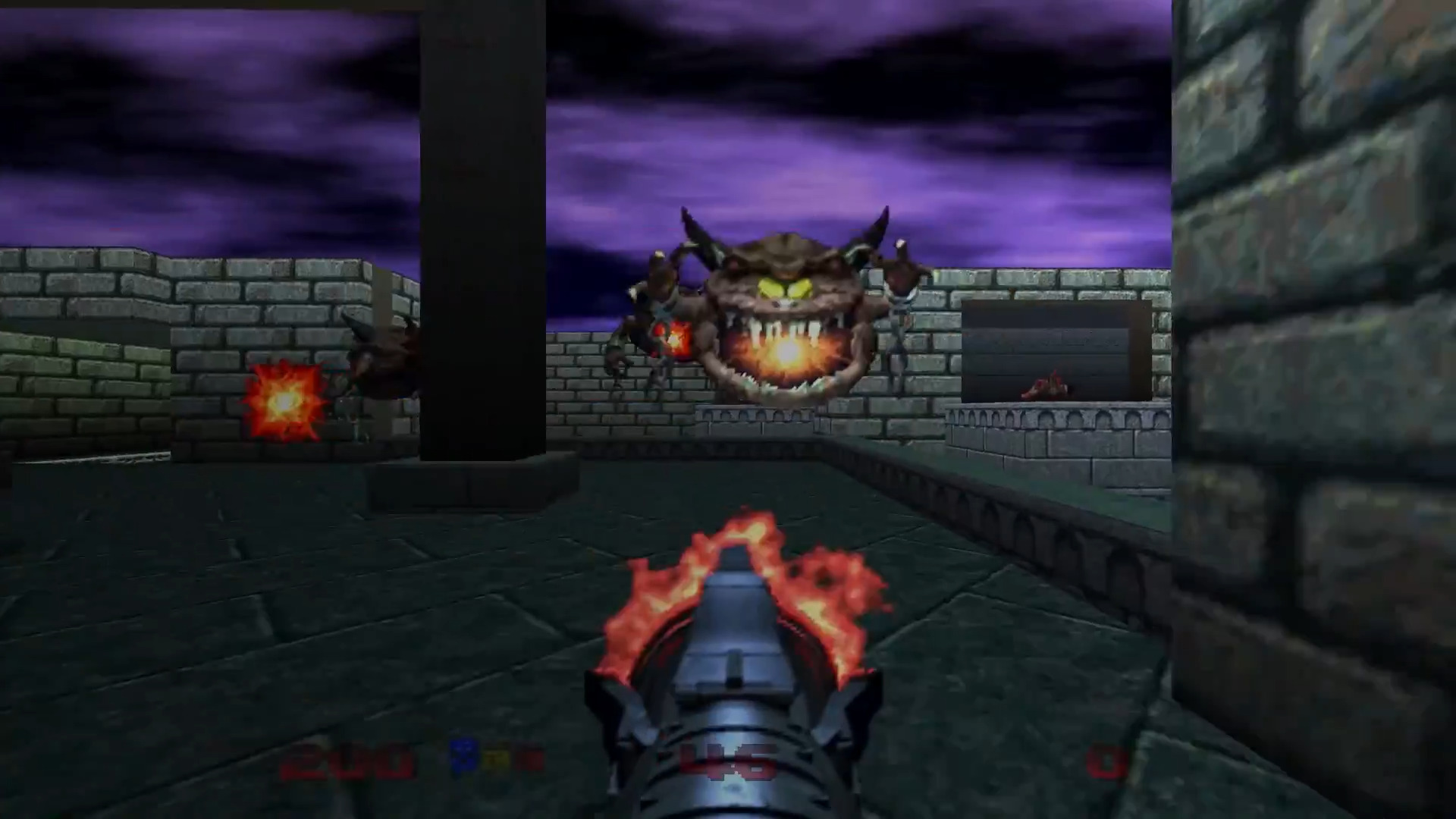
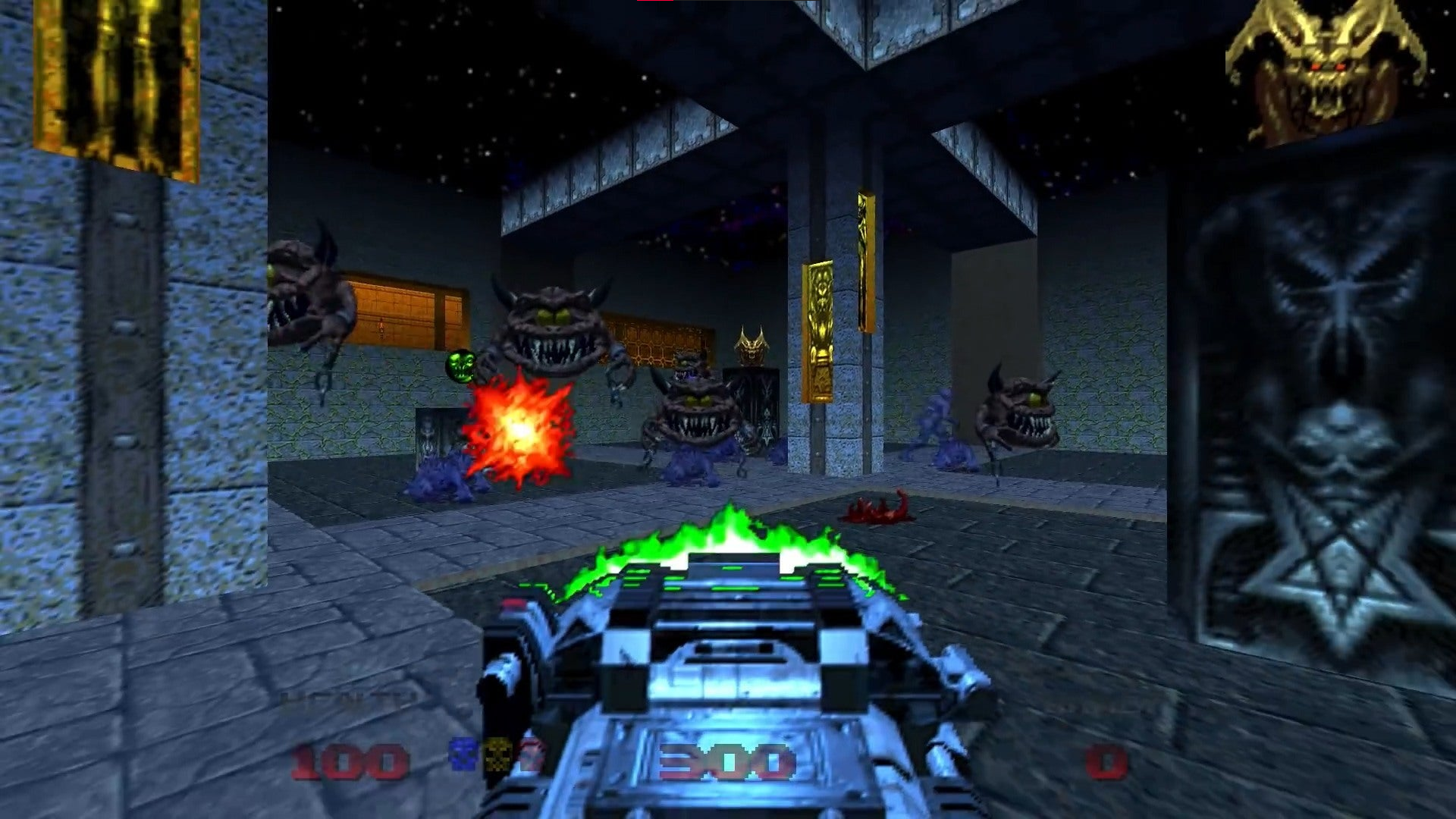
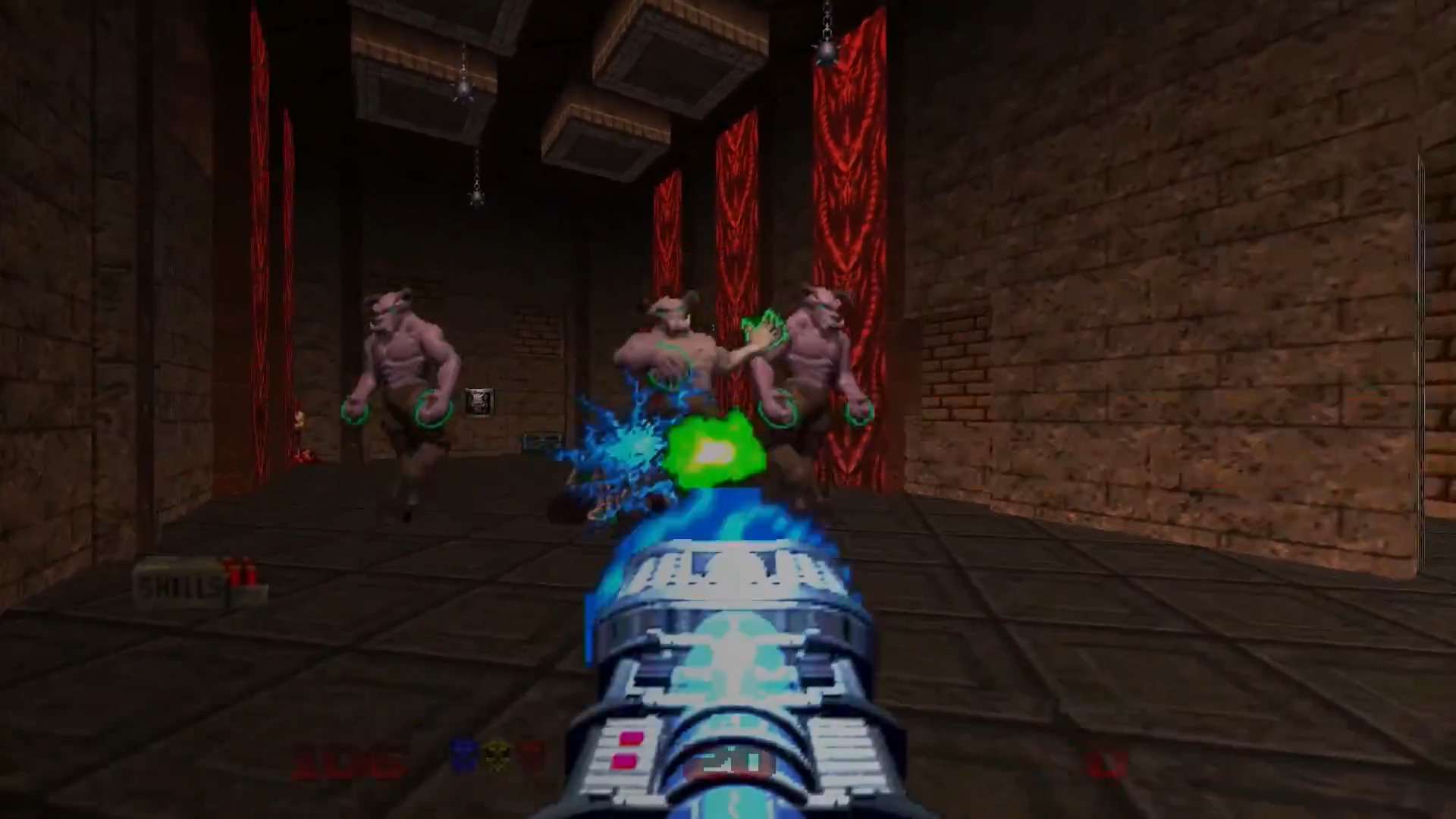

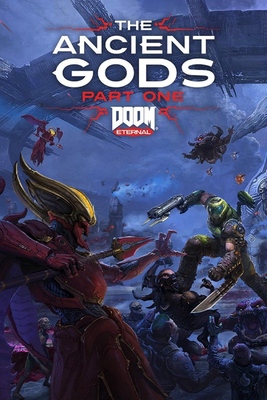
The Ancient Gods, Part One is the first single-player downloadable content expansion for Doom Eternal, and was previously available as a pre-order item to purchasers of the Year One Pass. While some details appeared on the Steam store page for the season pass previously, the expansion was officially announced by Bethesda during the QuakeCon at Home stream on Twitch on August 7, 2020, with release of a teaser trailer. A full reveal then followed during the GamesCom Opening Night Live event on August 27. It was released on October 20, 2020.
Following the Doom Slayer's defeat of the Khan Maykr and the Icon of Sin and the salvation of Earth, the Slayer learns that Urdak has since been overrun by the forces of Hell, which plan to use it as a staging ground for their conquest of reality. To return to Urdak and save the fallen paradise, the Slayer, aided by the ARC, reunites with the Seraphim (here revealed to be the secret identity of Samuel Hayden), who informs him that it is time for the Slayer to "serve the gods yet again".
Mick Gordon did not return for the expansion's soundtrack. Instead, Andrew Hulshult and David Levy were brought on to compose.





The Ancient Gods, Part Two is the second single-player downloadable content expansion for Doom Eternal. It was first available as a pre-order item to purchasers of the Year One Pass. Tangible details first appeared on the Steam store page in the form of achievement listings beginning on or around March 5, 2021. On March 7, Bethesda announced a teaser trailer release scheduled for March 15. A full trailer was announced for two days later on March 17, and contained the expansion's release date of March 18 when it was unveiled.
Part Two starts off where Part One ended, with the Dark Lord being restored to physical form after the Doom Slayer brought his life sphere to the Luminarium within Urdak. The Slayer shoots at the newly-formed Dark Lord, but it has no effect as the Luminarium forbids combat. The Dark Lord tells the Slayer that he will be waiting in Immora, the capital city of Hell, before leaving through a slipgate. This climactic expansion follows the Slayer's journey across dimensions to end Hell's reign of terror once and for all.
As of writing, it is the most recent mainline Doom title and thereby the ultimate ending to the franchise. There are currently no public plans for a sequel.
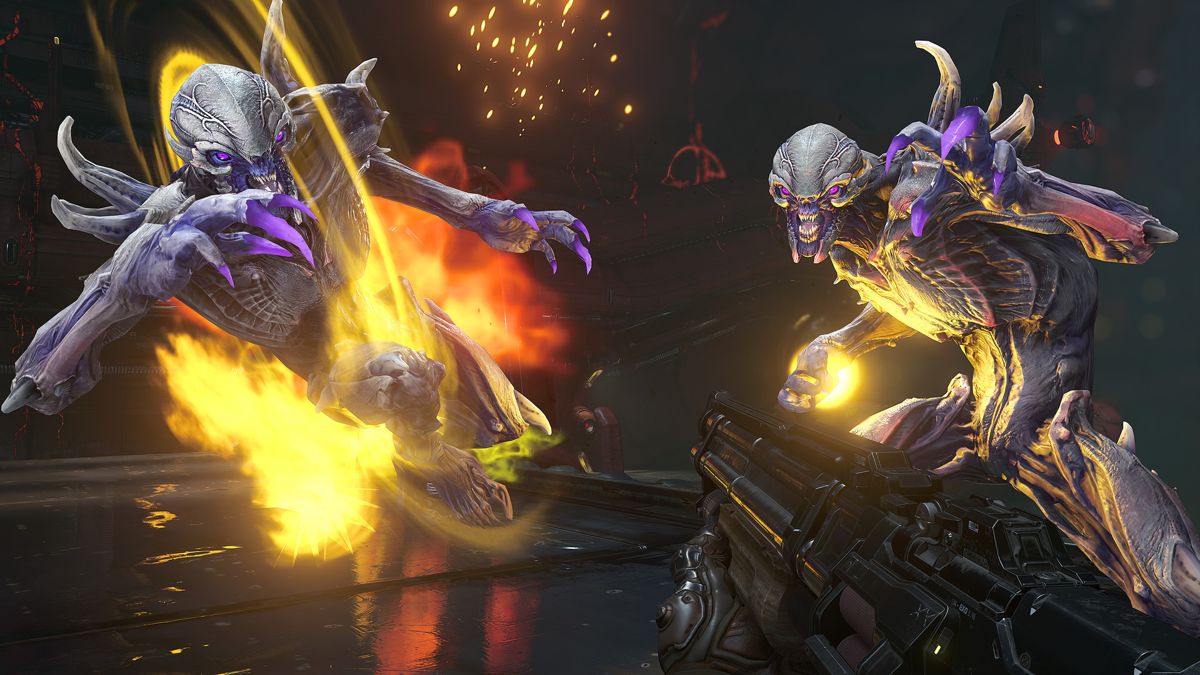
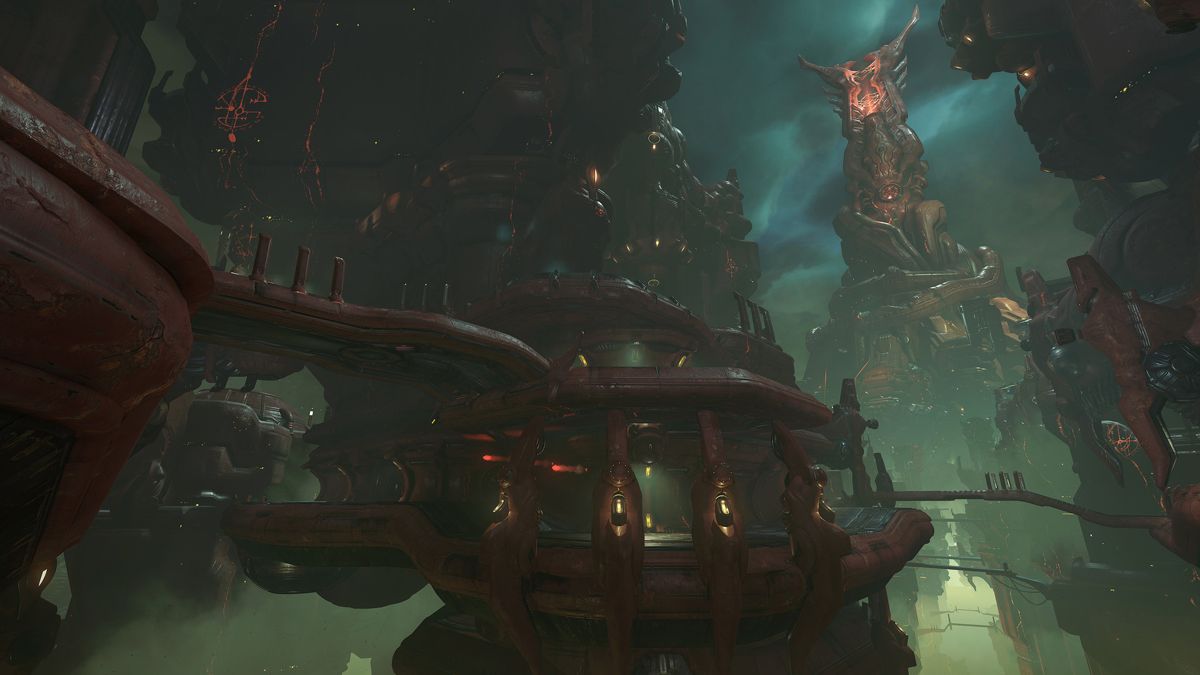
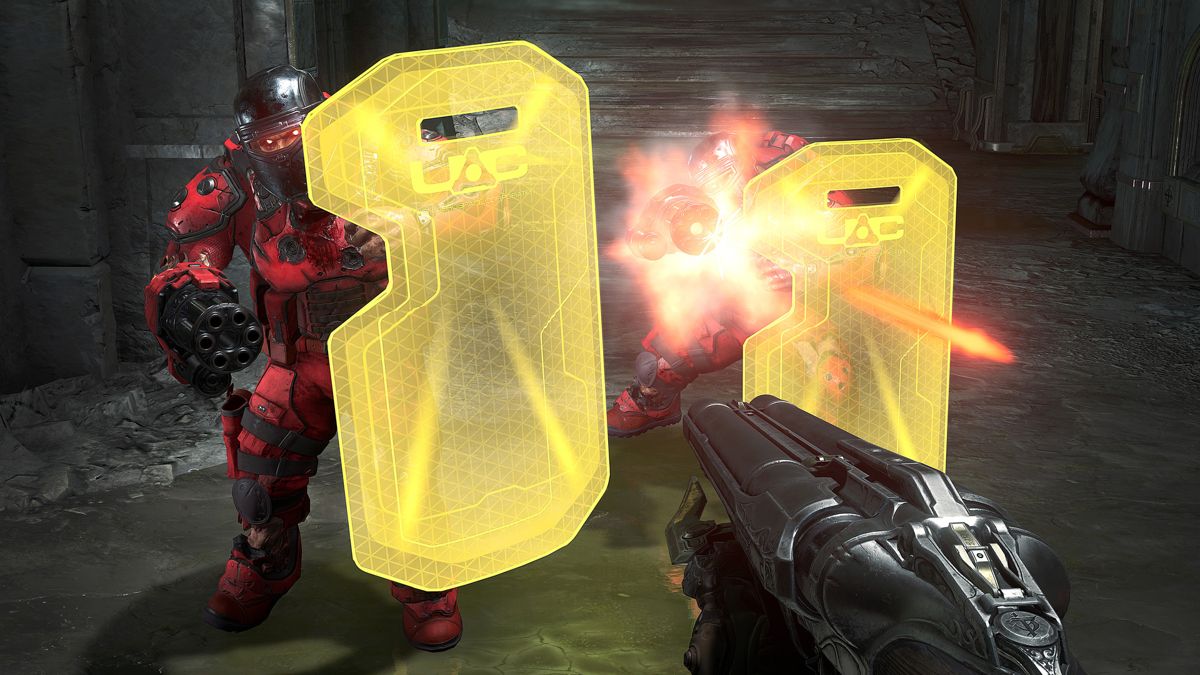


Mighty Doom is a mobile Doom game for Android and iOS devices developed by Alpha Dog Games and published by Bethesda Softworks. It is a top-down shooter where a toy version of the Doom Slayer called the "Mini Slayer" fights toy enemies within tiled environments using weapons and glory kills, clearing the stage by defeating all enemies present. Occasionally boss monster fights occur. The player can upgrade their statistics and arsenal with both randomized and purchased items.
The game is a top-down shooter where the player can control a miniature version of the Doom Slayer using a digital joystick. The weaponry is divided in three sections, primaries, secondaries and ultimate, with the last two being able to be activated manually. The game operates on a type-based system, from which also depends the weakness system. Like Doom (2016) and Doom Eternal the player can perform glory kills to regain health back. As the game progresses, the player can gain experience points and temporary upgrades, most notably at the end of boss fights and when level milestones are met.
